
This page is something of an overview of the route between Liverpool Lime Street - Manchester Victoria - Leeds, with most photographs taken in the 1970's & 1980's. Many of the photographs are taken from lineside positions, whilst there are many cab views taken from the locomotives/railcars working this route. Whilst some of the views don't feature any Sulzer powered locomotives I still hope the views provide a snapshot of this route, much of the infrastructure of which has been considerably altered or in many cases has completeley vanished.
For many years the western terminus of the Trans-Pennine route was Liverpool Lime Street, and for the purposes of this page our eastbound journey starts here. Occasional services would be extended through Chester and onto Llandudno, it would not be until the 1980's that the North Wales resorts would have a frequent through service across the Pennines to Leeds, York and beyond, with the Class 45's being regular performers on this route.
Liverpool Lime Street
(All text written in the first person is from Michael's notes - anything else comes from your webmaster.)
One oddity concerning my training and that of several other young drivers at Holbeck was that we became qualified to drive the Class 45's but not the Class 46's. Normally a ten day training course was provided to learn both types, but my training occurred when the Class 46's were in the process of being phased out. Thus I got a shortened five day course on the Class 45's only! Which was fine of course until one day at Liverpool Lime Street I arrive with a service from Leeds headed by a Class 45, I take my break and come back to find that my return working is behind a Class 46. I head back to the foreman's office and notify him that I don't know Class 46's! The foreman thought this can't be correct as everyone knows Class 45's and Class 46's. So he phones up Holbeck and learns that several of us only know Class 45's. The foreman now had several options - to use me on a later service, no problem there - it meant overtime or to find another locomotive, or find a conductor so I could work the Class 46 back. In the end the latter option was chosen.
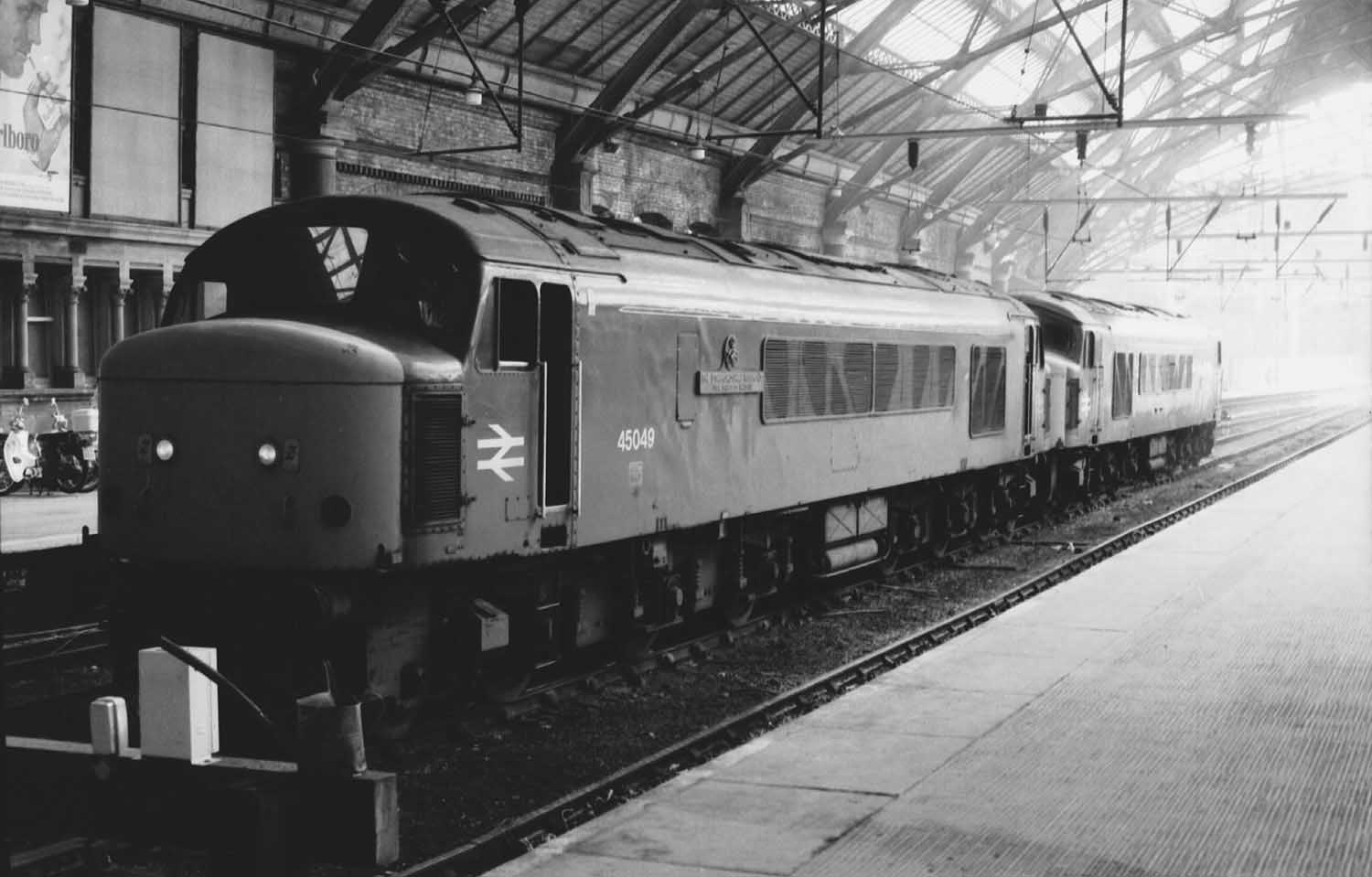
At Lime Street a short dead end track at the east end of the station held locomotives that would drop down on to arriving services ready to form the next departure of that particular diagram. When the dead end tracks at the east end of the station became filled any extra locomotives would be held against the buffer stops, the bay dead end, as seen in the view above. This overflow was most likely to happen in the morning or about tea time. Whilst you were in the short dead end, you were 'sat' with the nose of the locomotive just appearing out of the tunnel mouth, I can remember sat there one dinner time, when all of a sudden a bottle shattered on the nose of the locomotive, followed by bricks and more objects, luckily there wasn't another engine in the dead end, so I reversed the engine further into the tunnel, it was the village idiots above who had leaned over to see what the noise was below and saw our engine, so they bombarded it with missiles.
Speaking of Class 46's on August 21st 1978 one featured in Holbeck Diagram 210 which required signing on at Holbeck at 12.08 followed by a walk to Leeds City then:
1M63 to Liverpool departing 12.50 with a Trans Pennine unit, arriving Lime Street at 14.45 then
5M63 to Edge Hill depot, departing Lime Street at 15.10 and arriving Edge Hill 15.22 then
0E16 light engine to Lime Street with 46009 departing 15.50 and arriving 16.15 then
1E16 with ten coaches (330 tons) departing 17.10, arriving Leeds City at 19.01 followed by the obligatory walk to Holbeck.
On the above diagram with 46009 with driver Oakes I was putting the numbers up on the route indicator in the nose of the locomotive. On climbing up out of the nose I grabbed what was the cooker lid to aid myself, not knowing that my driver had placed a can of tea on the cooker lid. It wasn't locked, the cooker lid tipped up and I got covered in a can of tea. I was told to get in the back cab to dry out, the driver muttering something about it being my fault!
The week before (August 14th) diagram 210 had featured the Trans Pennine unit westwards, but the return working was in the hands of 40075.
My first turn as a driver into Liverpool Lime Street occurred on Thursday November 5th 1981 with three Class 47's involved in the day's diagram.
It was a case of signing on at Holbeck at 05.44 for diagram 56.
0V71 with 47512 depart Holbeck 06.10 arrive Neville Hill 06.20
5V71 depart Neville Hill 06.54 arrive Leeds City 07.04 with seven coaches 227 tons.
At Leeds City a transfer was made to work the 1M56 comprised of 47484 with eight coaches 264 tons, depart Leeds 07.42 arrive Liverpool Lime Street 09.37. Fog 'as thick as a wood' was encountered westwards from Chat Moss. For the return journey the 1E08 was waiting with 47036 , depart 11.05 arrive Leeds 13.02 with the same load as the westbound turn.
I was fortunate to drive one Deltic over the Leeds - Liverpool Lime Street route, it was 55002, but the date is now forgotten. I was the conductor for the route but to make things easier the driver let me take the controls. Basically it was like being in charge of a ten litre car with a small trailer on it - the Deltics over this route just played with the trains. On other trips I remember we would occasionally turn off one of the engines!

The former LNW route was taken out of Lime Street providing a reasonably direct route to Manchester Victoria. The exit from Lime Street was typical of many in the big cities featuring tunnels and cuttings. Tunnels passed through were Russell Street (131 yards), Mount Pleasant (134 yards), Crown Street (57 yards), Smithdown Lane (94 yards), Overbury Street (144 yards) and Tunnel Road (58 & 74 yards). Just beyond Tunnel Road tunnels was Edge Hill station and the adjacent Edge Hill diesel depot and carriage sidings.

Beyond Edge Hill the lines to Crewe swung off to the right, Bootle Branch Junction quickly followed, the branch curving off to the north west. The line then entered the spectacular Mount Olive Cutting - see view below.

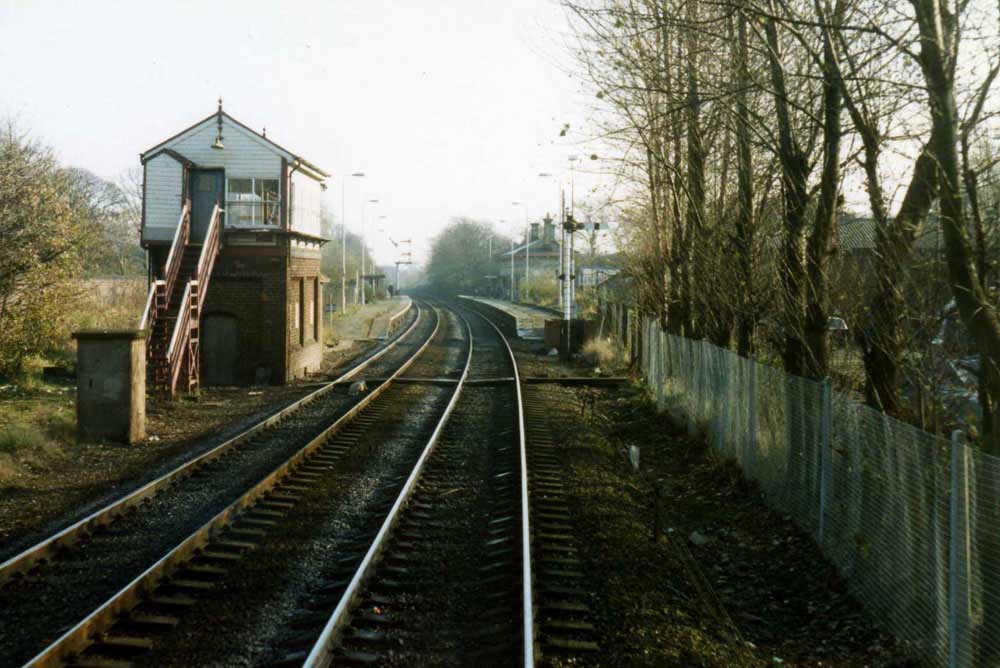
The route also passed through Rainhill, the scene of the 1825 Locomotive Trials and later the 1980 celebrations of the 150th anniversary of the opening of the Liverpool & Manchester Railway in 1830. The view below shows the signal box in quieter times.
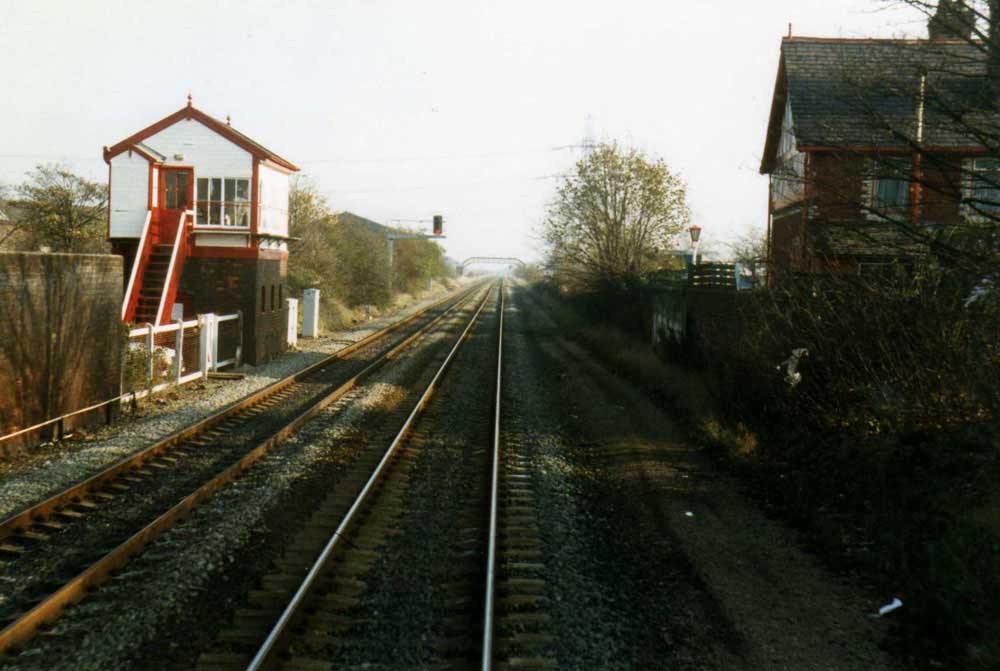
Parkside (Huskisson Memorial)

The Huskisson Memorial is situated east of the A573 overbridge at the site of the shortlived first Parkside station on the Manchester Victoria - Liverpool Lime Street line.
The memorial commemorates the death of William Huskisson MP who was struck and killed by a train on September 15th 1830, the opening day of the Liverpool & Manchester Railway. Because of the opening day celebrations eight specials were operated between Liverpool & Manchester, using both lines to make their way eastwards. Parkside is situated midway between the two cities, becoming the ideal location for the steam locomotives to replenish their water supplies. Whilst the locomotive of one train was being watered some passengers took the opportunity to walk around and greet others and await the arrival of the next train. Huskisson had stepped down to walk to a nearby carriage which contained the Prime Minister, The Duke of Wellington.
Approaching was another train hauled by 'The Rocket'. Warnings were given to those on the ground to get clear of the line, some climbed back into the carriages, other including Huskisson drew close to the standing train. An open carriage door and inadequate space between the two trains caused the door to strike Huskisson, knocking him down and causing him to fall under the wheels of 'The Rocket'. Huskisson survived the initial impact but died later that evening - one of the locomotive's being used to move Huskisson to Eccles.
It is perhaps ironic that Huskisson was a leading supporter of the development of the railways and the locomotive involved was the award winner at the Rainhill trials.
Manchester Victoria
For your webmaster Manchester Victoria alway seemed like something out of a different era. Most of my travels to Manchester ended up in Piccadilly, replete with all its 'improvements' following the electrification of the route to London. To walk across town to Victoria was like entering a museum, a rambling beast of a station, with platforms stretching off into the distance, and of course with the ever present rain creating an image of Manchester that was hard to forget. It seemed a challenge for the imagination to wonder how all these tracks and platforms could be profitably used, and the views below frequently give the impression of the huge size of the place.
And of course for the number takers the 'wallside' pilot was always a dead certainty to be there, looking through the photographs I've acquired over the years this has to be one of the most photographed locations for the Class 25's (and many Class 24's), given time I figure one could acquire views of the whole class here. It is also a place of steam nostalgia, many of the final BR steam workings in the UK, including the many farewell specials featured Manchester Victoria in their itineraries.
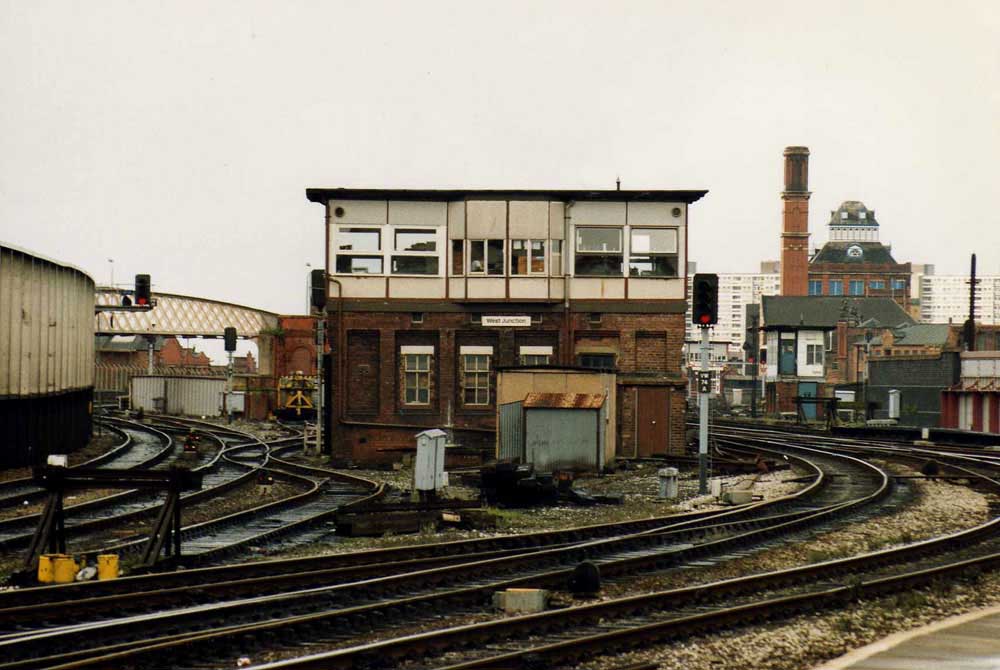

On September 28th 1985 I'd worked into Manchester with a job from Leeds but was not scheduled to return east for three hours. The timetable was consulted for a round trip to Bury to visit the preserved railway facilities there. The outward journey and visit to the facilities was accomplished according to plan, but on the way back things started to go wrong. Bury Interchange had been reached on time and the service to Manchester Victoria departed OK. Several station stops were made, the journey progressing without incident when suddenly the brakes come on and we stopped pretty quickly. Footsteps were then heard on the ballast closely followed by a heated conversation between what was presumed to be the driver and the signalman.
This was not much fun, no-one knew where I was and how would I explain the late departure of my working back to Leeds if this train I was travelling on didn't make some forward progress soon? After what seemed like days, though probably closer to ten minutes, I think I wore my watch out continually checking it, footsteps were again heard on the ballast, it was the driver returning to his cab, to resume our journey to Manchester. Our delay had been caused by running passed a signal at danger, not an event to be taken lightly. And it could have been far worse, the delays would have been off the scale if we had hit someone. Once there it was a mad dash over to where the Leeds bound service was waiting, an on-time departure was achieved!
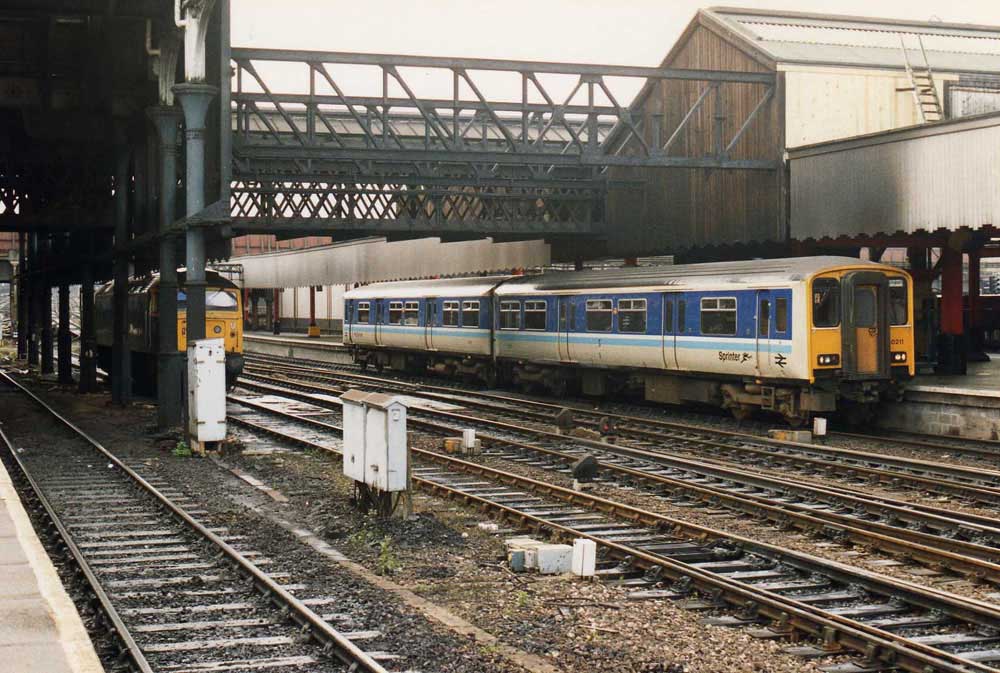
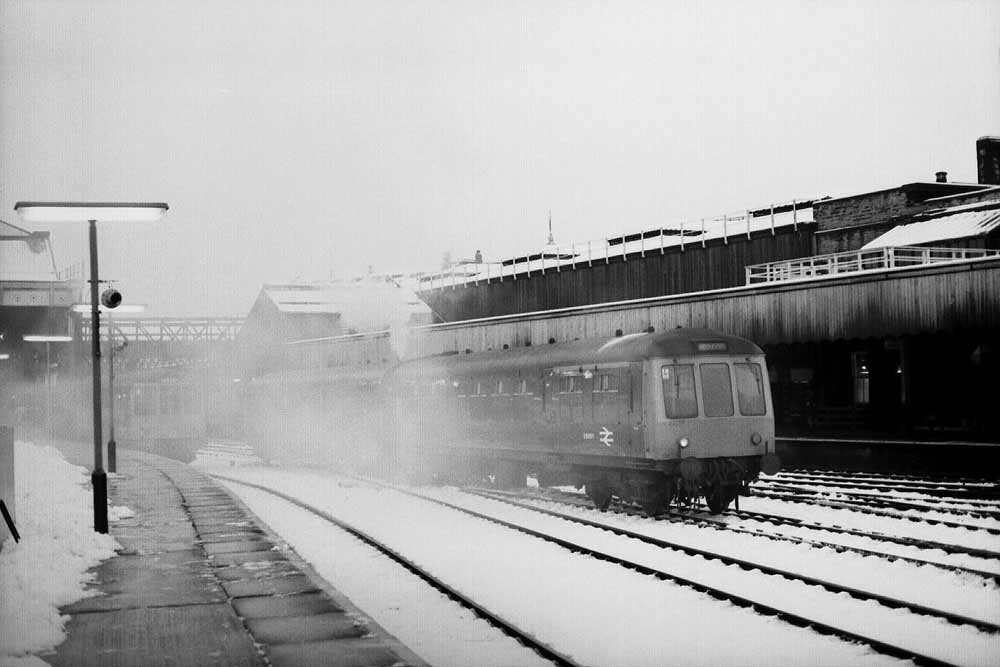
On the Liverpool - Scarborough run the arrival of the new multiple unit diagrams called for the splitting of westbound services here. One set would go to Liverpool, the other to Chester or Holyhead. On the eastbound workings the two sets would be joined at Manchester Victoria for the run over the Pennines. This arrangement lasted no more than two years. Prior to the introduction of these services I attended a meeting with a management representative who emphasised how wonderful these new units would be over the existing aging rolling stock. The point was raised of how could the new shorter four car DMU sets provide the same level of comfort and capacity of a locomotive hauled nine coach hauled set that they were about to replace. They couldn't, rhetoric and unanswered questions reduced the meeting to something of little use. I was asked to leave the room, and not surprisingly I was not sent to any more meetings!


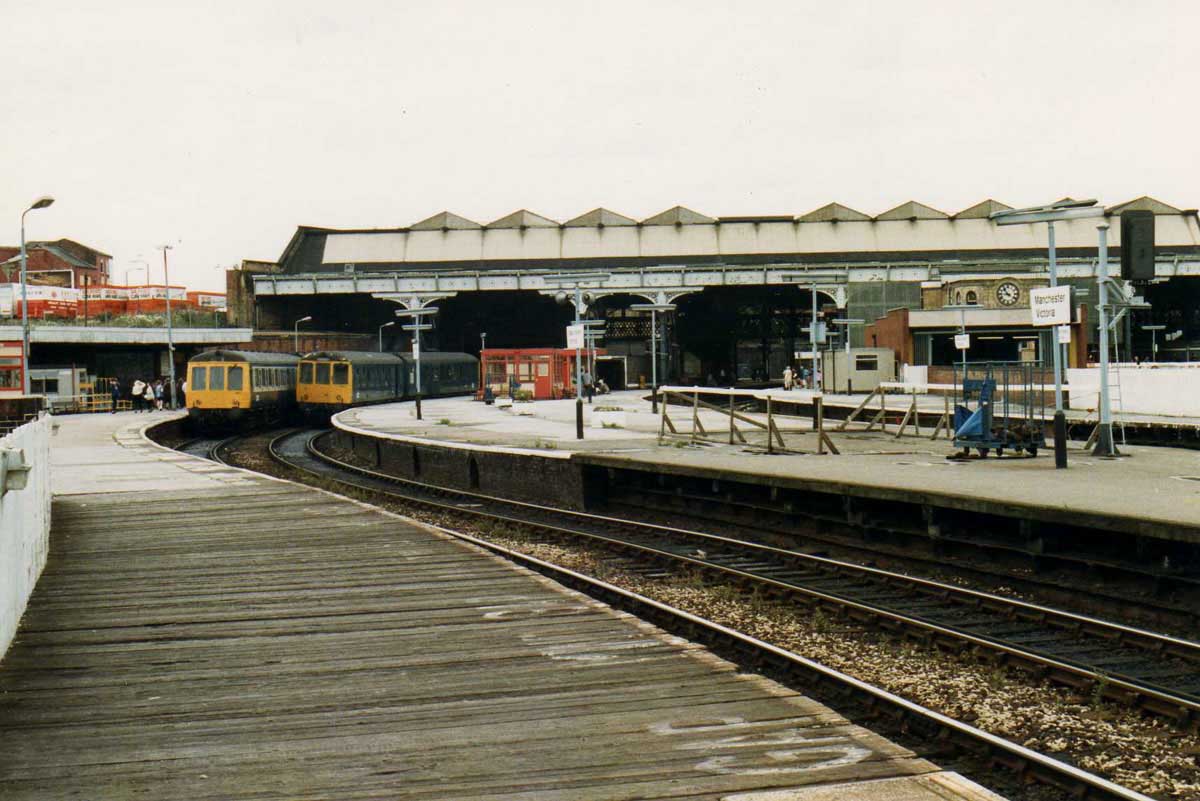
The purpose for the wallside pilots quickly became apparent when a departure was made eastwards from Manchester Victoria - at the eastern end of the platforms commenced Miles Platting bank, which proved a particular challenge for freights stopped in the station awaiting a path eastwards. And eastwards from Victoria you were now running over former L & Y lines.

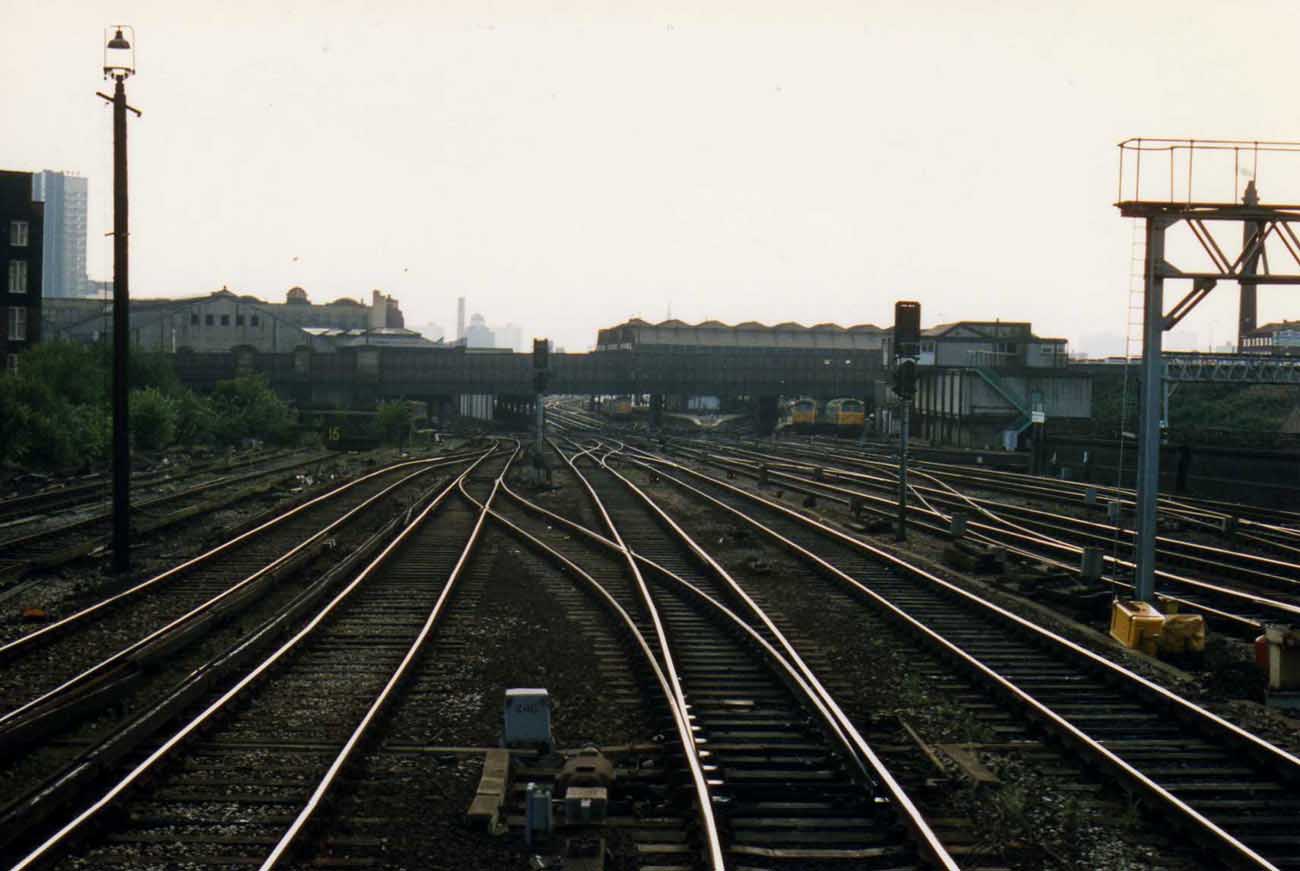
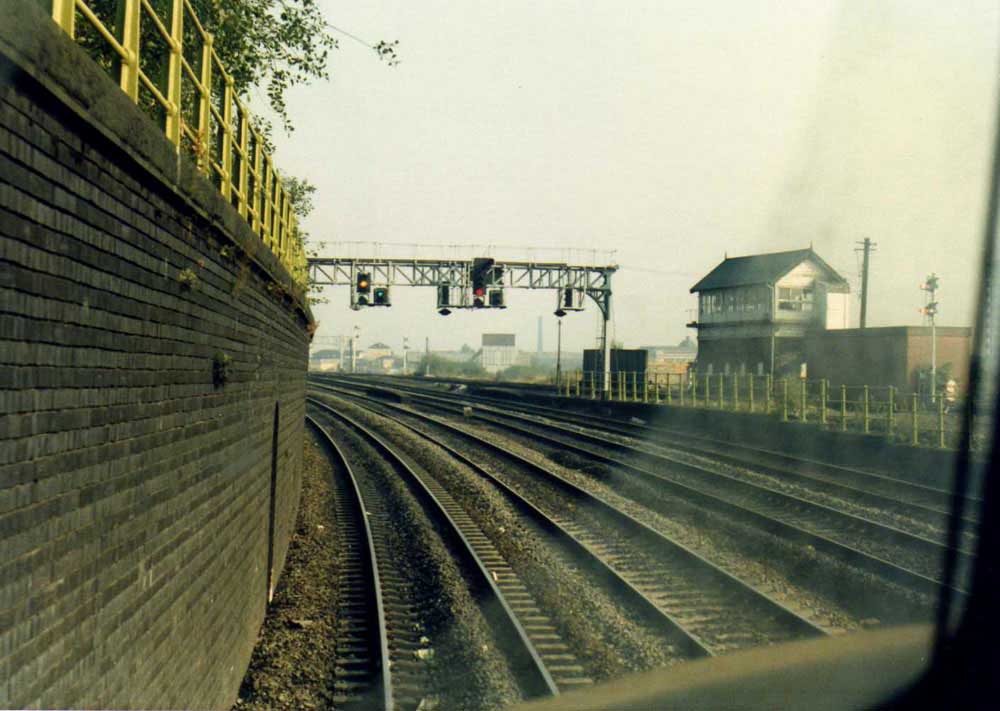
In the above view the wall to the left carried a line which would eventually take you over the running lines into Manchester Oldham Road. Next to the wall is the Down Fast, then the Up Fast, Down Slow and Up Slow. The two little semaphores on the right are the exit signals from Colleyhurst Street/Oldham Road. The top one brought you out onto the Down East Goods, the bottom one onto the Up East Goods.
The colour lights on the gantry seen in both the views above and below require a little explanation. These signals are basically a repeater for the semaphore signals just visible in the distance in the photograph below. In the view above from the cab of the Class 45 the Down Fast colour light signals are showing orange and green. The orange indicates that the line to Rochdale/Oldham will be displaying a danger signal at the next set of semaphores while the green signal just to the right indicates the the semaphore is 'off' and the train is cleared for the line to Stalybridge. The right hand set of colour lights for the Down Slow conveys a similar purpose but is slightly different! In this case a yellow or green aspect will indicate the route is set for Rochdale/Oldham, if these aspects are showing and the white 'feather' lights are lit then the route to Stalybridge is set. The lights to the right, if showing an aspect will indicate the route is set to cross over to the Down East Goods.
The 'calling on', 'dollys' or 'cats eyes' lights directly beneath the main colour lights would allow you to pass the gantry but in the knowledge that the line would be obstructed before reaching the next set of signals. In the case of this gantry at Colleyhurst they would have been used frequently by the banking engines, and for those on the slow line that you could be routed onto the goods lines.

Just to the east of Colleyhurst signal box some sidings branched off the the mainline and went down into Colleyhurst Yard, formerly Manchester Oldham Road. Michael once went into the yard with a Class 40 to collect a couple of wagons to take back to Hunslet. On entering the yard it was like stepping back two decades, the contents in the yard seemed to be from a whole different era. Its all gone now, but nothing so far has been built over it. On another journey I was working back from Manchester Victoria to Leeds and had been routed rather unusually onto the Down Slow to get past an eastbound freight which was being banked by a Class 31. I was fascinated by the fact that the banking engine was not coupled to the train and for a short while continued to watch the Class 31 banking its train. Coming to the top of the bank I could not recall the aspect of the signal that was controlling my route.
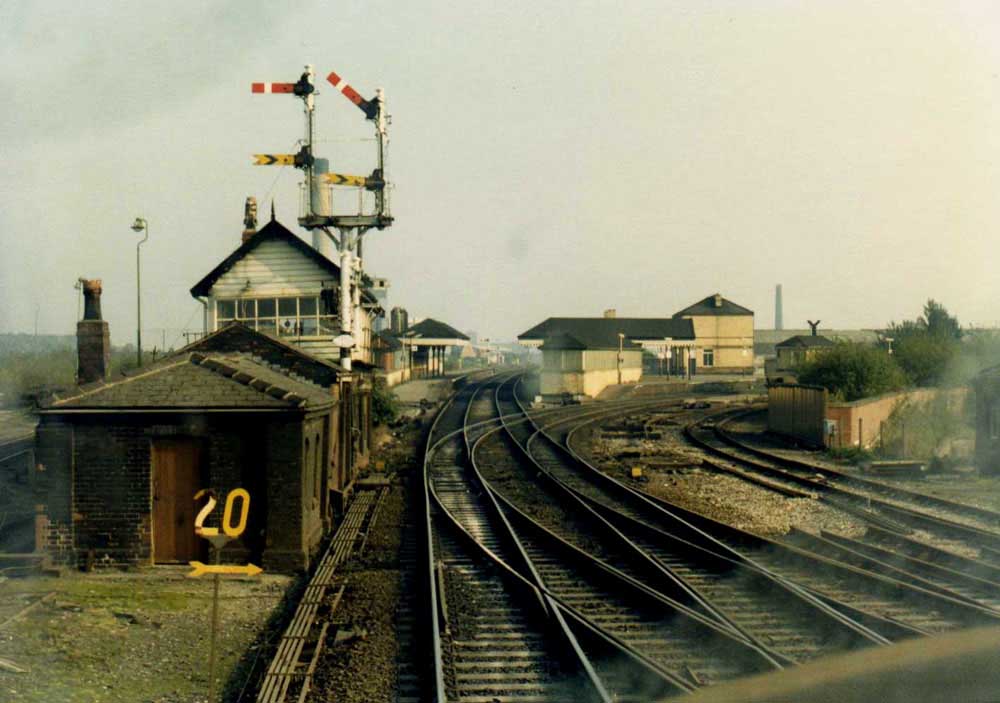

At Miles Platting station (see view above) the lines to Oldham and Rochdale split from the lines to Stalybridge. For the spotters amongst us the line to Oldham was significant as it included Dean Lane station, which was just across the street from Newton Heath depot, which at one time was home to a large quantity of Class 08/25/40's and many, many dmu's.

In the above view the lines on the left are the slow lines which came in at Park and provided a round about way to come in from Manchester Piccadilly. In the foreground are the fast lines. The DMU is crossing over Miles Platting Junction heading towards Manchester Victoria, either on a passenger turn or having just come off Newton Heath depot. The small brick building to the left of the slow lines blocks out the view of Colleyhurst signalbox. The yard behind the brick building used to receive shipments of cement, countless times as Michael passed this yard there would be a pair of Class 25's in this yard sorting out the cement tanks.
During the time that I was a passed driver I'd worked a DMU from Leeds to Manchester, the instruction then was to go to Newton Heath depot, however I had not signed the depot. Despite this minor difficulty and after much insistance (from the foreman no less) I went to the depot. The conductor joined me and we went down to four road to take a DMU down to Manchester Victoria. Walking across the yard we swapped details of our driving turns. I'd recently reached seventy turns, once the magic hundred was reached your pay packet would see a small increase! As the conductor recounted his number of turns we walked passed a Class 31 that had sustained major damage with literally one side peeled back displaying all its internal workings. He glanced at the Class 31 'Oh that', he says 'was my fourth driving turn!' And this was the person to guide me over the route back to Manchester Victoria?
Back when I was a passed driver we would sign a few extra routes for the experience and the extra driving wage in our paypackets. One morning one of the older drivers ends up in conversation about the young drivers signing for all of England and know the road. We listened as this gentleman went on and on about the subject, wisely we decided to stay quietly on the sidelines. A few weeks later a story filtered back about this driver who at the time was working the Manchester - Leeds route via Rochdale & Bradford Exchange. On passing Thorpes Bridge signalbox (near Newton Heath) he got the 'sub' shunting signal (or dollies or cats eyes depending on your locality) on its own with no indication. The rule here, when driving a passenger train (not empty coaching stock) is to stop and find out where you are going, because with a sub you might be going into a deadend siding, parcels area or similar location. But this driver didn't stop and the signalman realised it was too late to intervene safely, so the passengers had the delights of the Newton Heath washing plant as part of their journey. The train reached its destination safely but the driver was stuck with this story for a long time to come.
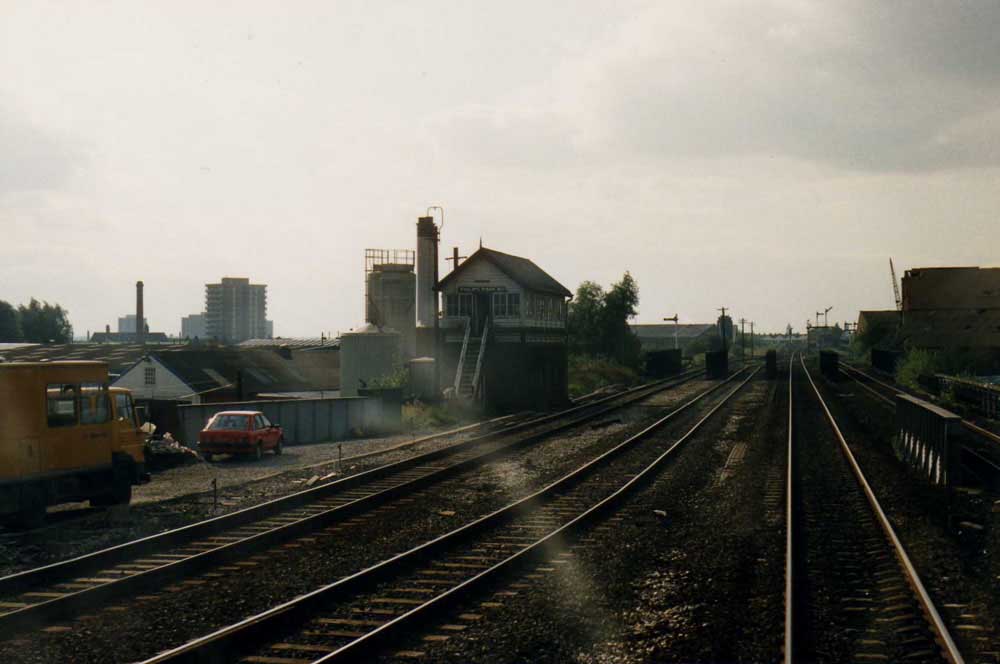

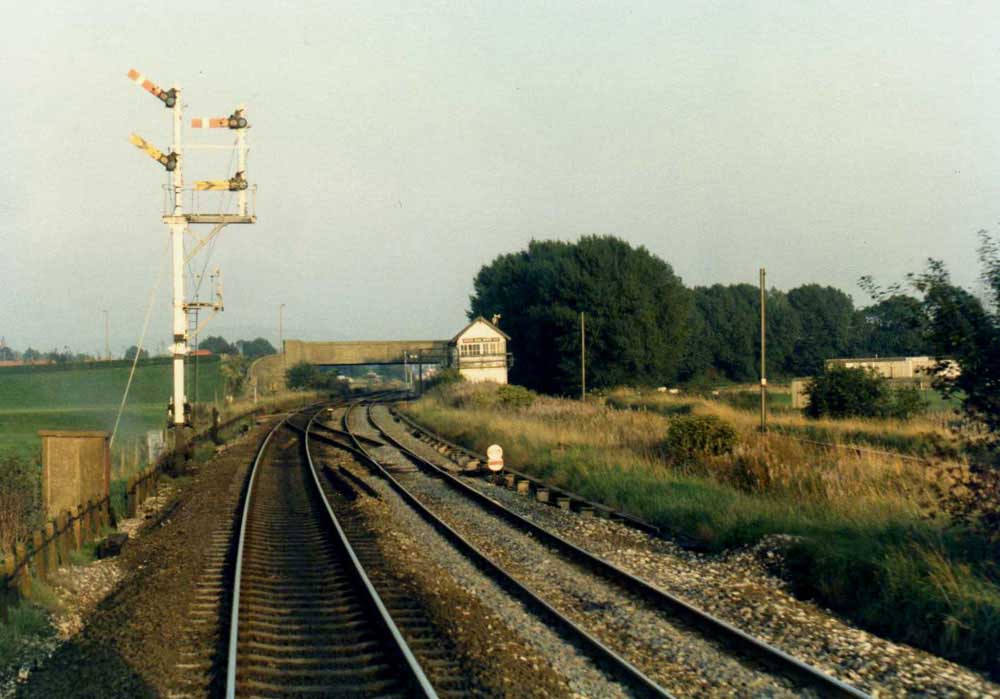
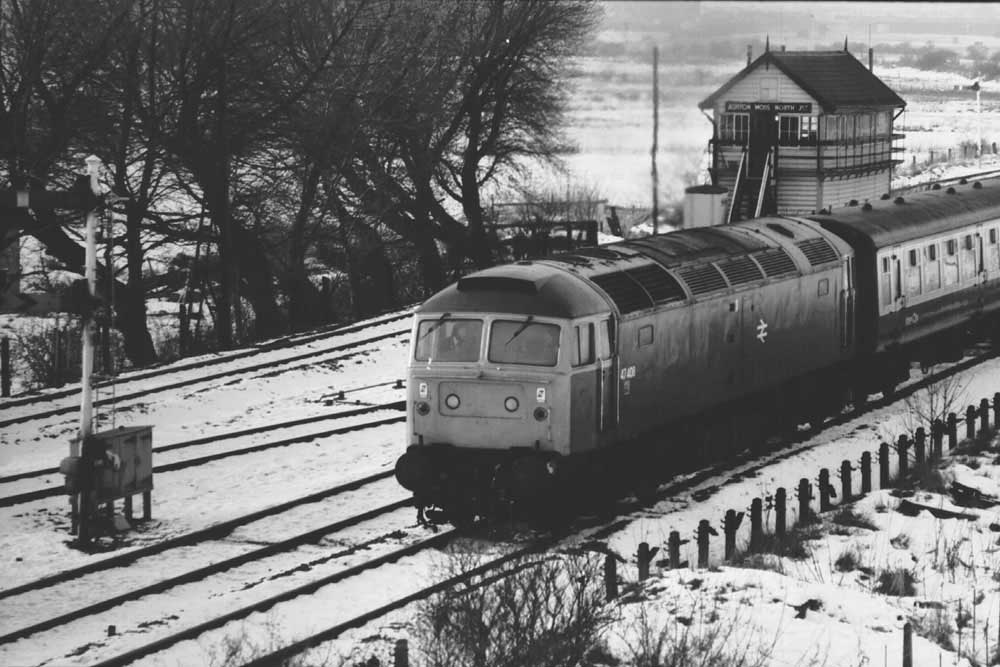


Approaching Stalybridge the urban scenery changes slightly as the geography of the western Pennines makes its presence felt and the Victorian railway builders were required to closely follow the river valleys into the hills to maintain easier gradients. At Stalybridge the former L & Y metals were traded for LNW metals for the run across the Pennines. The view below marks the transition from L & Y to LNW metals. Northwest of Stalybridge two routes ran to Diggle.
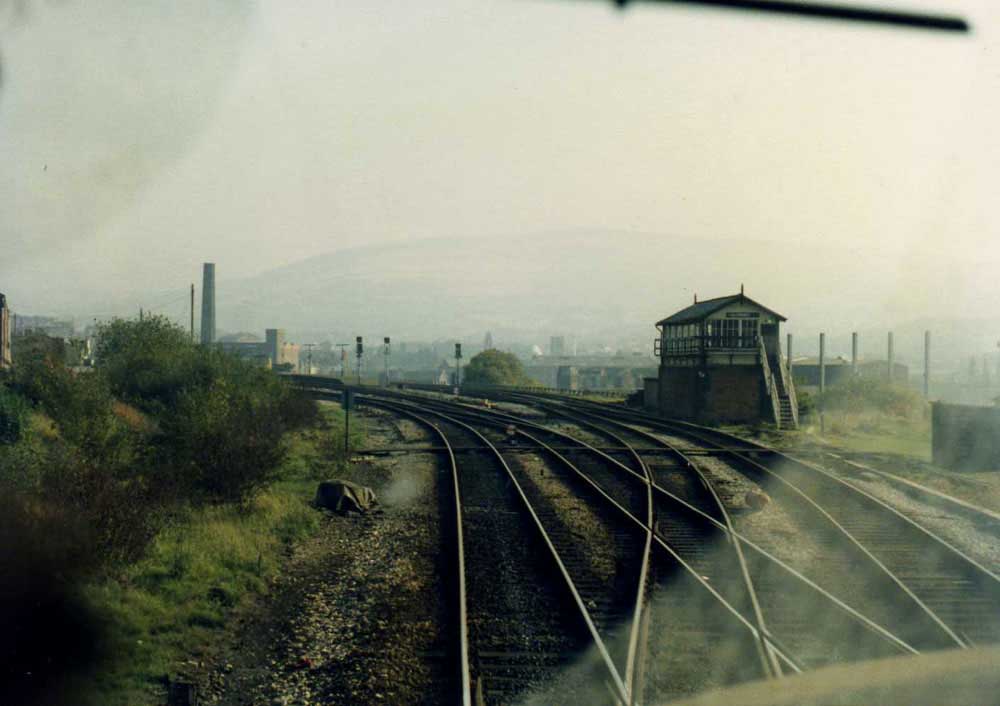
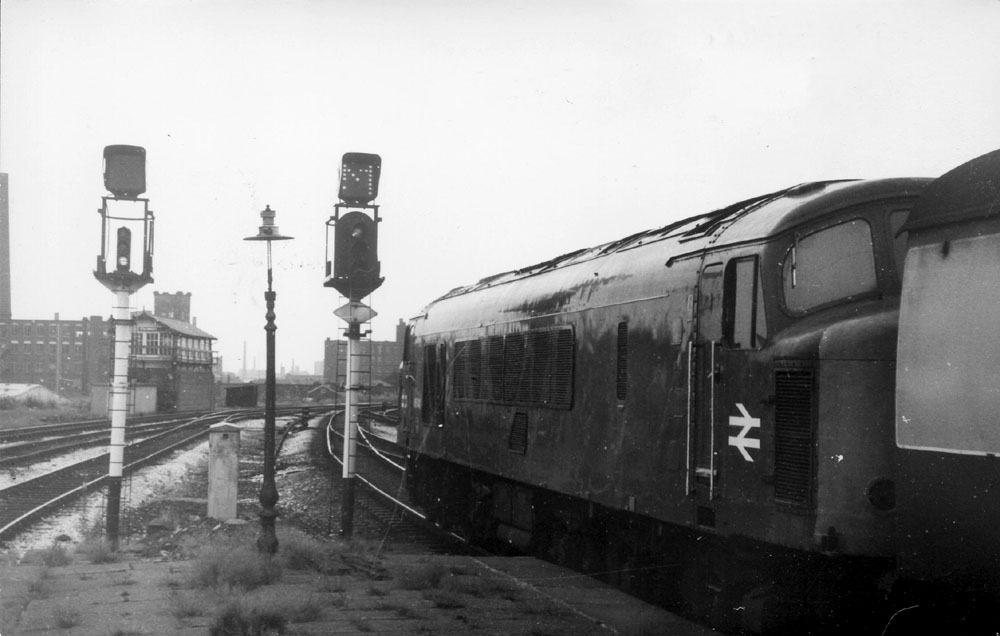
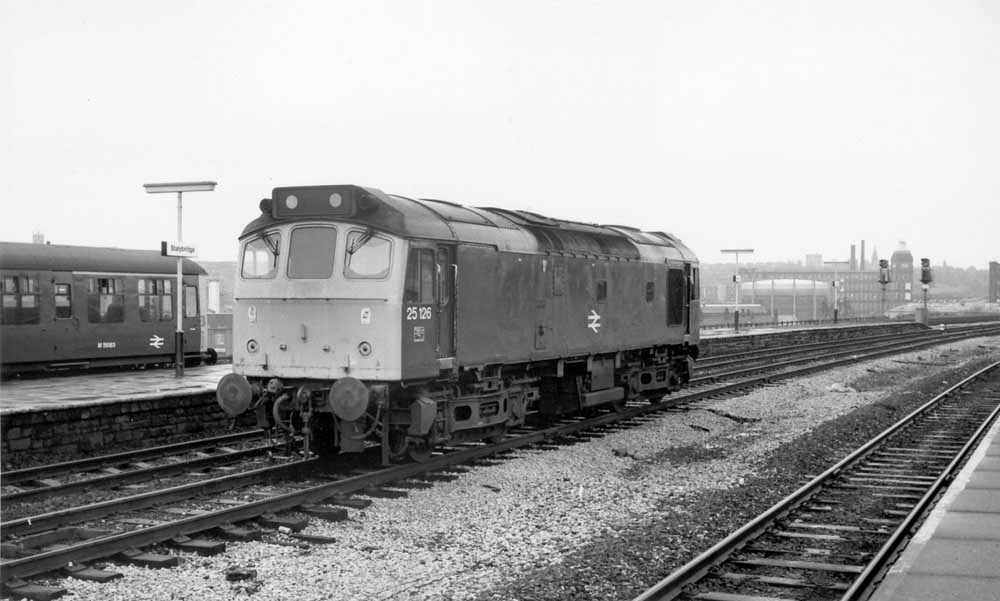
Although the vast majority of Michael's workings over this route took him to Manchester Victoria, there was one diagram that required a 'left turn' at Stalybridge to reach Stockport. The route indicater would show a 'G' in the above view, for Guide Bridge, then to Heaton Norris and on to Stockport. The Stockport diagram for Michael was a late evening departure from Leeds with a Class 45/47 and a load of vans. Arrival at Stockport was usually just after midnight. Here the locomotive was uncoupled and a set of vans were picked up for a run back to Leeds. Arrival at Leeds was about 02.20am, following this the diagram changed over time, initially it was a round trip to Bradford Interchange and then home, later an HST from Neville Hill was involved, and then the last part of this diagram was removed!
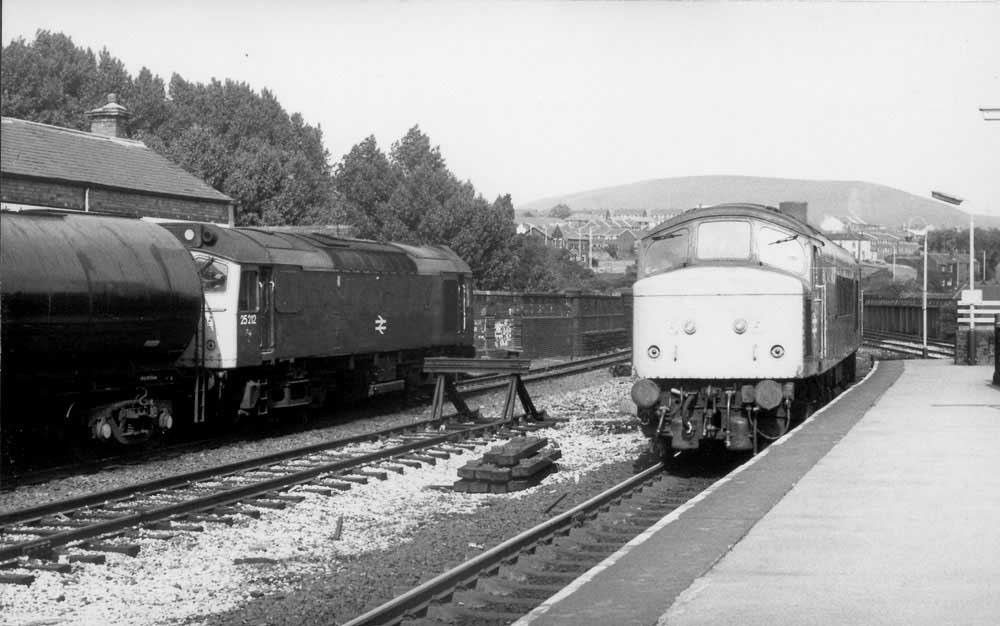
About the eastbound Class 25, Michael comments that depending on the load 25212 would have certainly coughed going up towards Saddleworth, it's only 15 mph through Stalybridge, so basically it's a standing start assuming the signal at the end of the platform is green, if it wasn't, you had two colour light intermediate block signals to encounter on the bank. When we operated the Trans-Pennine Units and we were secondmaning a Driver (somewhere in the diagram there was a locomotive to be worked) we used to get one of the numerous watering cans that were left here, so we could fill up the engines on the unit with water, ready for the climb.
Talking of watering cans, I was arriving at Leeds after leaving York with one of the new 142 units, the passenger doors are air operated, on this trip one of the doors was not functioning properly, no doubt a problem with the microswitch. The fault was causing the unit to lose power intermittently. I had phoned through to Leeds to ask for a fitter to have a look at the door, now on arrival at Leeds there was the fitter, with his mate (a second fitter), the second fitter was carrying a big hammer and a watering can, I didn't ask!
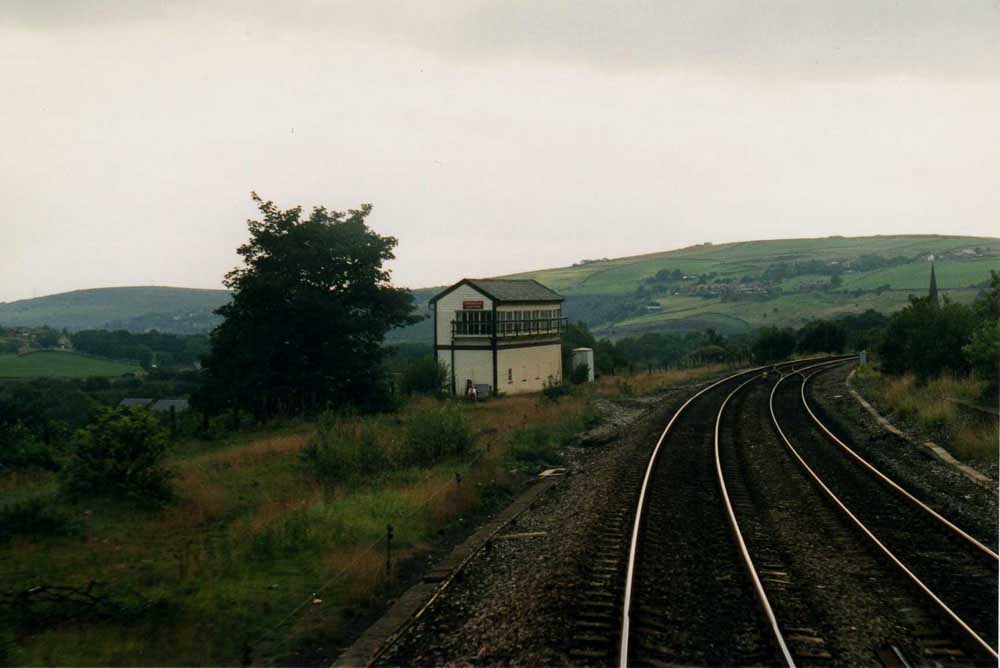
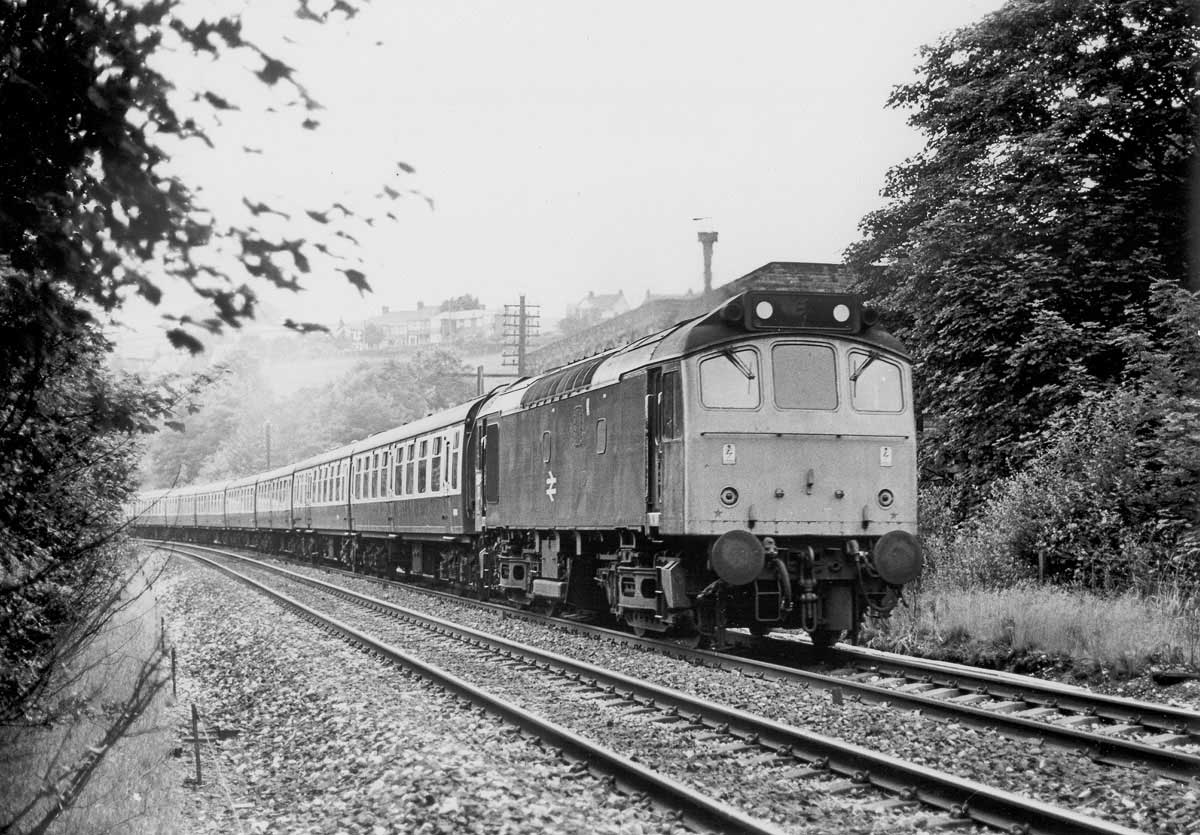
At Diggle Junction the two lines that had separated at Stalybridge rejoined in order to pass through the lengthy Standedge Tunnel.


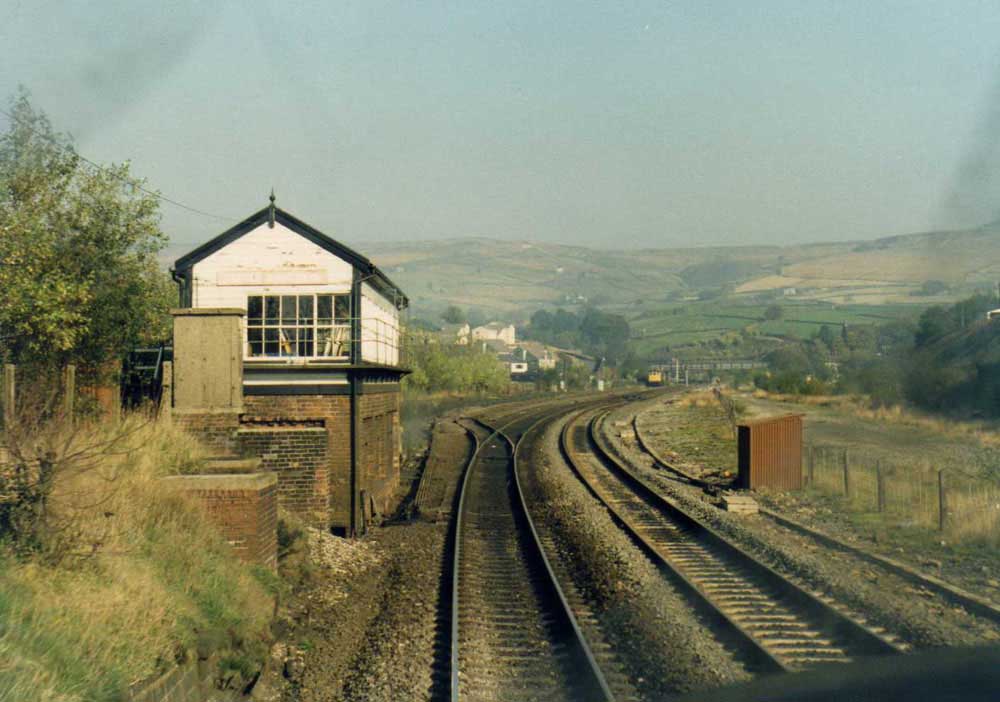
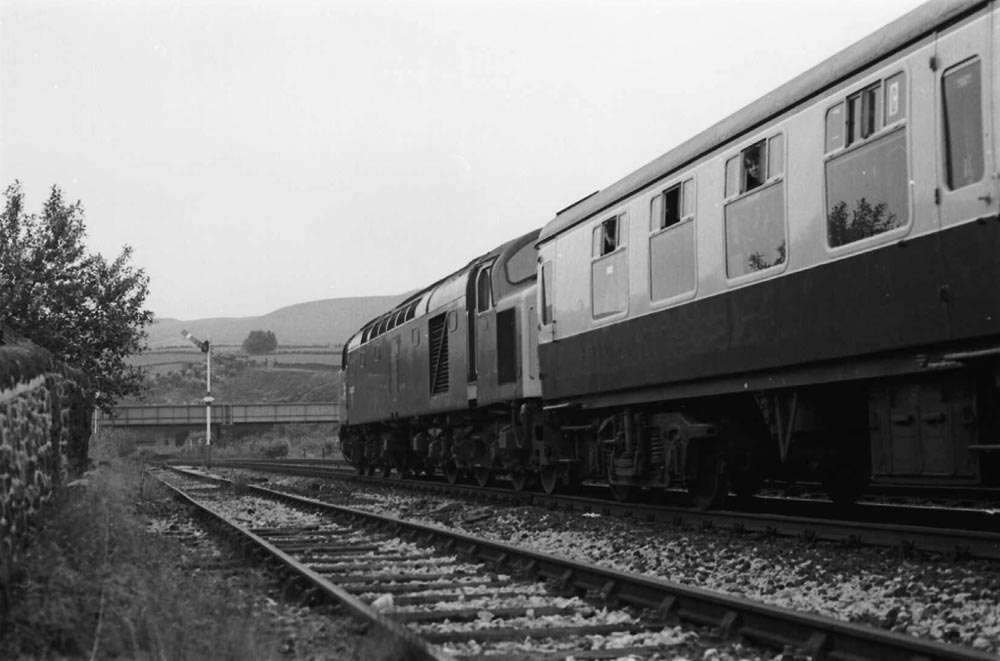
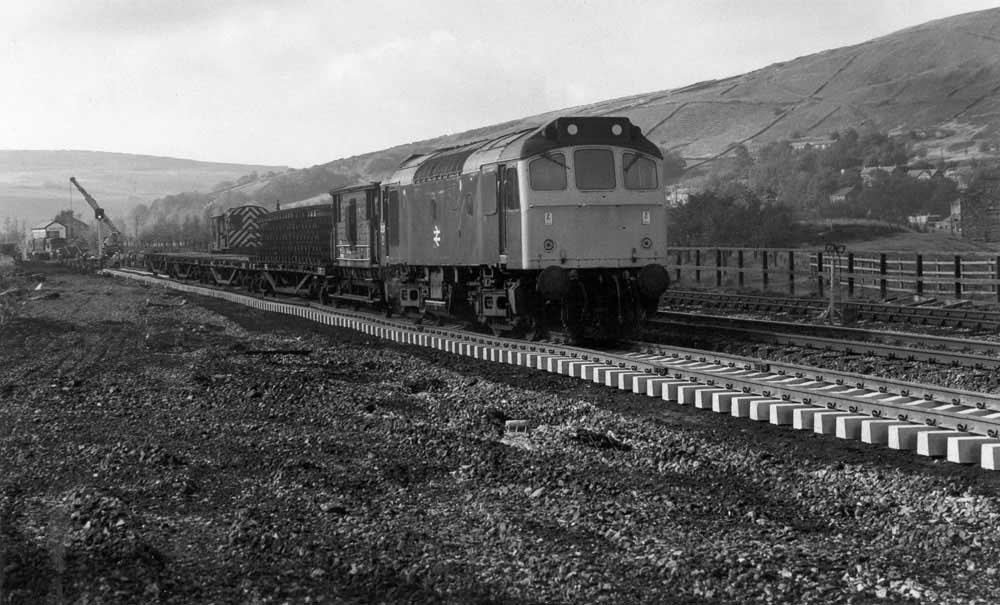
Standedge Tunnel took the line under the Pennines, once clear of this the line had a fairly straight run into the Yorkshire mill towns, with Huddersfield being the first major city reached.
In the tunnel itself between the old and new tunnels is a messroom built out of solid stone, a bit like a cave. Talking of tunnels, we once went out to Morley to relieve a ballast train at Morley Station, on arrival at one in the morning there was nothing about, so my driver went to speak with the Morley signalman. He told us, 'Oh, it's in the tunnel', so the guard, driver and yours truly began the long trek through the tunnel, my mate told me about the rats in here and they were the biggest I've ever seen, we walked for about two hours and on coming out of the tunnel there was still nothing, so we kept on, eventually you came to Howley Park where we could hear the sounds of the ballast trains. After passing Howley, we came to Batley, well, just south of Lady Anne Crossing and there it was, after two and a half hours walk! After an exchange of words with the other crew we waved them goodbye, yes they had to walk back to Morley!

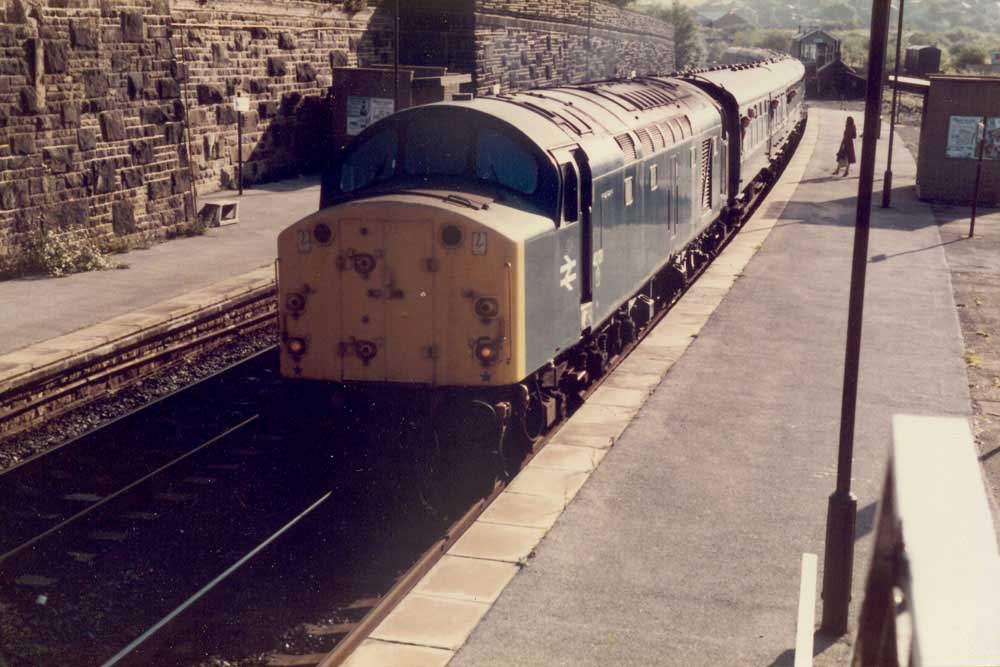
In the view above the train is going through platform 2 (platform 1 to the left, platform 3 to the right) on the 'Up Line' heading towards Diggle or Standedge Tunnel. At this point the train should be braking for the 45mph required to enter the tunnel. The signalbox and all the semaphores have now gone. I once got stopped here with an express at his home signal (just about visible above the first coach) and nothing happened for a couple of minutes. Eventually it was neccessary to leave the cab and visit the signalbox. On entering the box, there were about 10-15 people and a couple of dogs present. They must have been on a shoot, I asked which one was the signalman and he appeared from behind part of the group, after explaining who I was we were soon back on our way. Possibly the group in the box must have been sorting the day's shoot with the signalman.

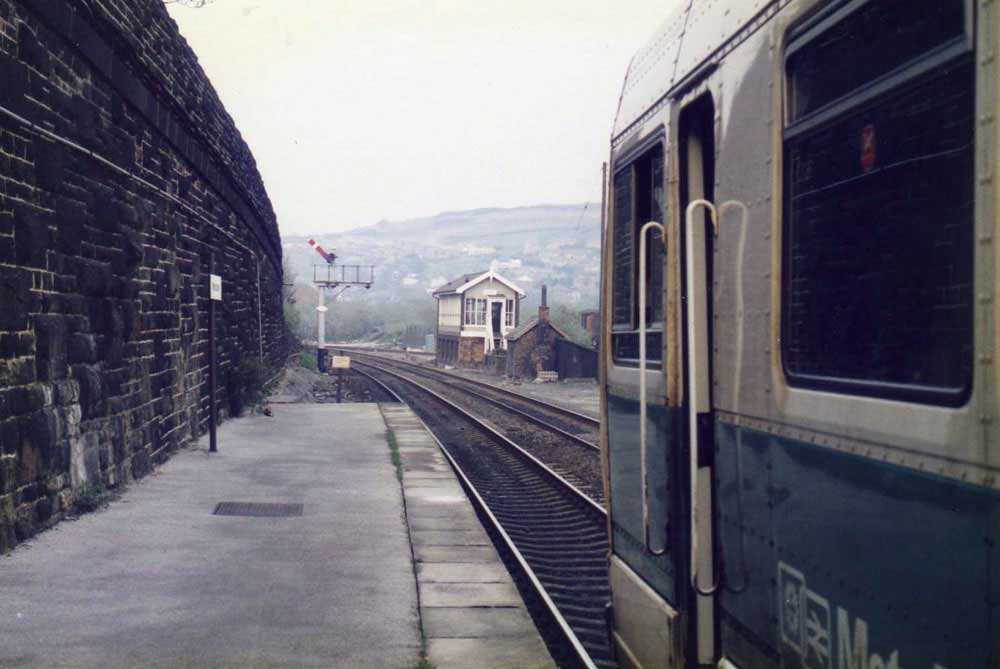
Behind the cab of the Class 141's were two rows of benches, under one of which was the coupling which was needed if the unit failed and required towing by another unit. On one late evening service one of the benches was occupied by a young man and his girlfriend. In showing off to the girlfriend he picked up the heavy coupling, the whole scene being visible in the reflection in the cab windows. Giving the unit a bit of throttle as we crossed a set of points caused the unit to rock quite a bit due to its single axles. The instability caused the young man to lose his grip on the heavy coupling, no lasting injury was caused, but the swearing and ensuing rain dance suggested the coupling would definately leave some good bruises somewhere!
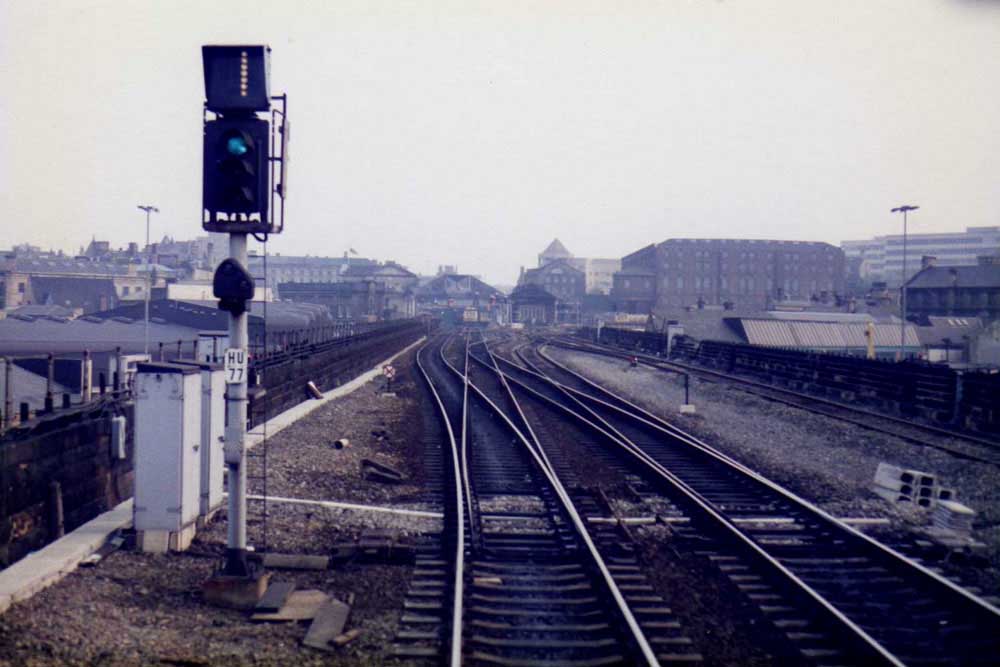
On a hot summers afternoon a Healey Mills crew had been shunting the colliery yard at Clayton West, once the job was finished they departed the yard with the customary brake van at each end of the train and made their way to Healey Mills. Passing through Huddersfield they were stopped at Hillhouses, the secondman going to the phone to contact the signalman. The signalman notified the secondman to go back to his guard and tell him to get into the brakevan. On walking back to the rear brakevan he found the guard sat on a deckchair reading his paper on the concrete bit of the brakevan!

After crossing under the Brighouse - Mirfield ex L & Y route the Trans-Pennine services make use of a 1960's built connection by BR to bring the route off the LNW metals and briefly onto L & Y metals for the run past Mirfield to the aptly named LNW Jct to take the route through Dewsbury and Morley towards Leeds.
On one departure from Leeds with a Class 156 bound for Manchester Piccadilly the internal driver's door flew open and this man comes in swearing and carrying on about the train not stopping at Littleborough (on the Rochdale - Hebden Bridge line). After a polite dressing down to the passenger to get him to calm down, I asked what train did you ask for? He replied 'The Manchester train', with my response being that this was the Manchester train. 'I know' he says 'but it doesn't stop at Littleborough'. OK, 'So why didn't you ask for the Littleborough train'? The passenger's reply 'I'll sit in the train until Manchester and then get one back to Littleborough!'
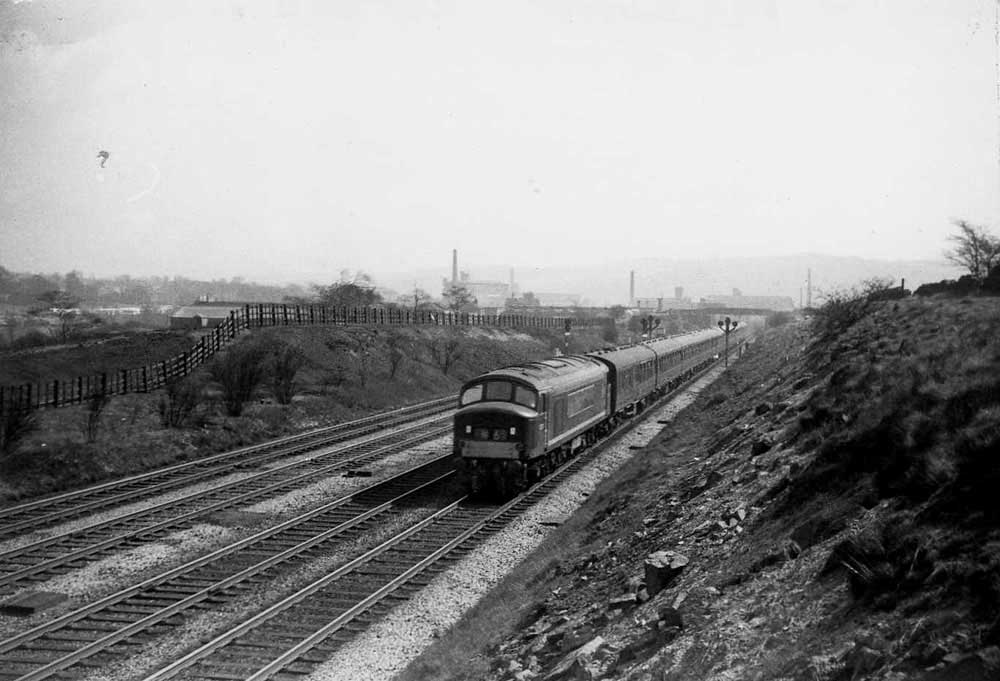
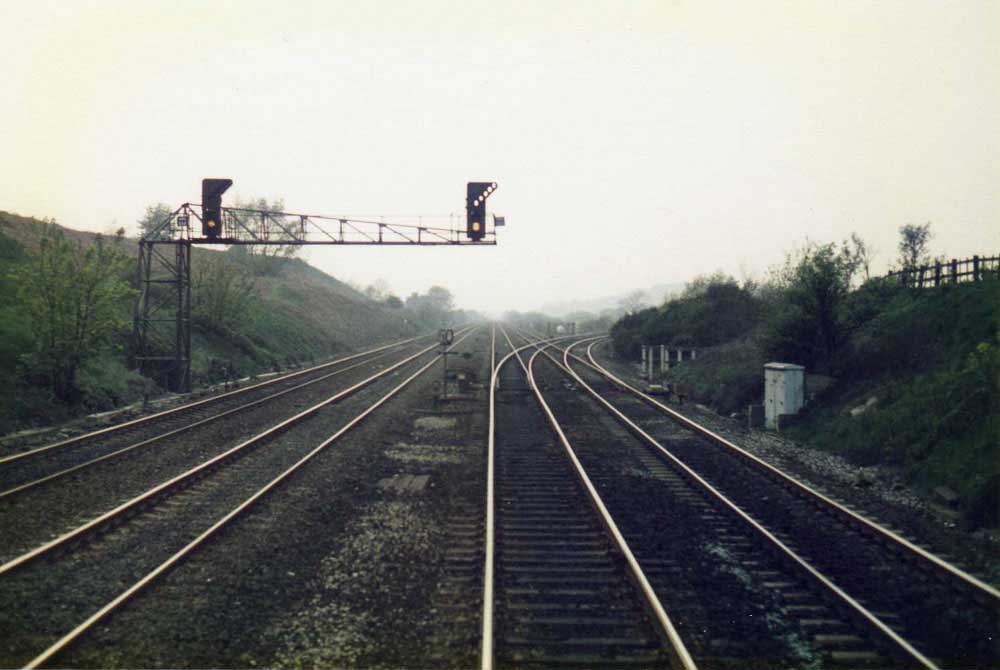
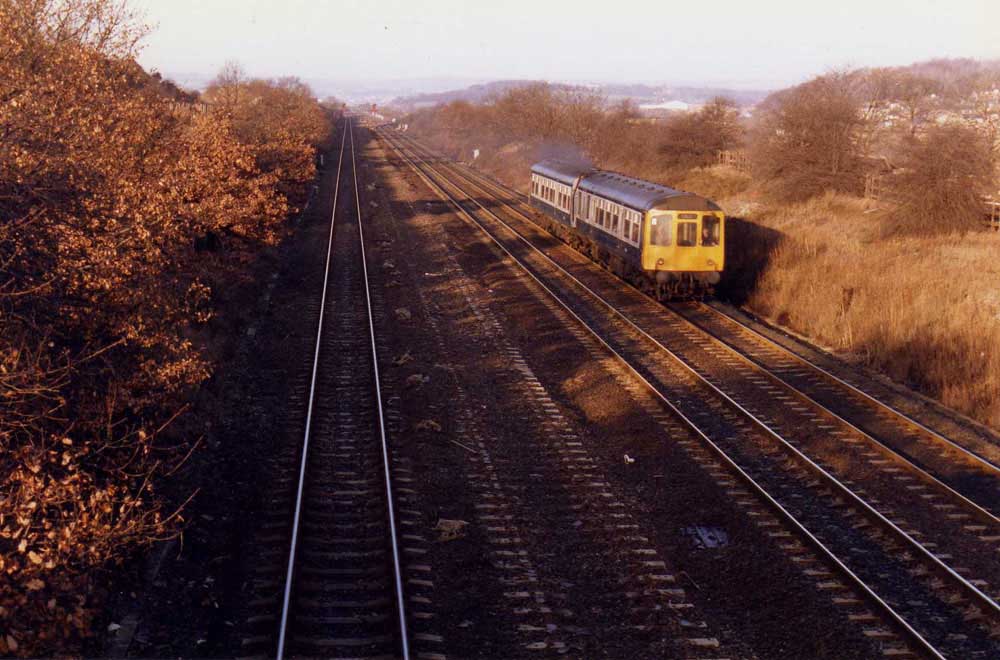
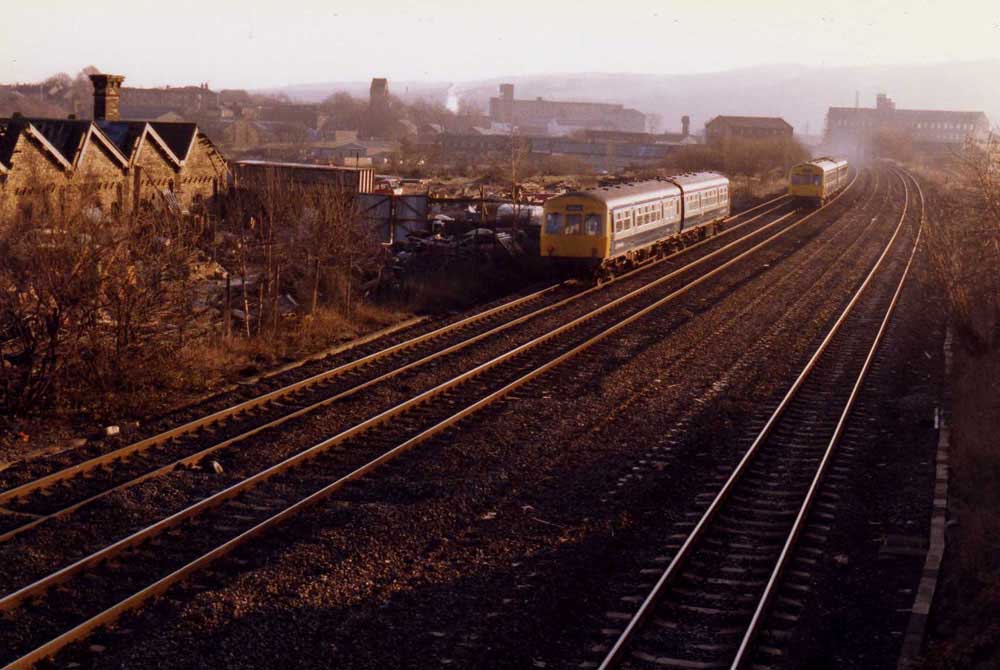
During August 1975 we went to Manchester Victoria to work a special that had come from Wales and was heading back to Leeds. The train arrived with 45003 and it was with a club outing. We were due to stop at Stalybridge, Huddersfield, Mirfield, Dewsbury, Batley & Leeds. Manchester Victoria had been left on time but on reaching Huddersfield the station time there put us five minutes down. By the time we arrived at Dewsbury the lost time had been made up, because, the station staff informed us we had missed the stop at Mirfield! 'Yes I know' fires back my driver 'we were five minutes late leaving Huddersfield, so we missed Mirfield to arrive here now on time! The station guy walked away in disbelief, and yes we had completely forgotten about the Mirfield stop!


To get to Manchester Victoria to work back with the newspaper trains we normally worked a passenger DMU via Bradford Interchange or the odd Trans Pennine unit via Huddersfield, we used to work the 1E26 which was 02.15 from Manchester Victoria to Leeds, first stop was Huddersfield, arrival at 02.51 and a swift departure at 02.55, as soon as we arrived at Huddersfield (Platform 4) the papers were just being thrown out onto the platform, it was an incredible hive of activity. After departure the next stop was Dewsbury, (arrival at 03.06) dropping the guard off at the telelphone and ground frame (in the picture above) we would then 'draw forward' with handsignals from the guard, eventually stopping us over the ground frame 'main to main' cross over, then reverse the train into Platform one at Dewsbury. The reversal made it easier to get the papers off the station, otherwise the paper crews would have to carry them over the footbridge (the lift hasn't worked for years)!
Departure at Dewsbury being 03.23, again a hive of activity here with papers just being thrown onto the platform, arrival at Leeds 03.42. We also had another job (or two) where again we would work a DMU via Bradford or Huddersfield to Manchester Victoria, on arrival at Manchester, you would then get the 'van' to Newton Heath depot, pick up the locomotive there and take it down to Red Bank sidings (sometimes a Class 50 would be in the sidings with you). You would couple to a train and take it down to Manchester Victoria and into platform 11. Here whilst the locomotive was being uncoupled, the train would 'split' and make two trains, the first departure was at 00.17 (1E02) which went to Newcastle (we were relieved at Leeds by York men). The second departure was 00.30 (1E04) which went to York and again we were relieved by York men (these trains didn't stop at Dewsbury).
The first time I ever got one of these jobs, the driver didn't turn up (Alfie Harrison, he was always late) and I had to go to Manchester on the cushions, it was like going to the other end of the world, I don't know who worked the train forward from Leeds, at Manchester I went to see the foreman and told him about my Driver....Answer was, don't worry son, he's coming on the next train!
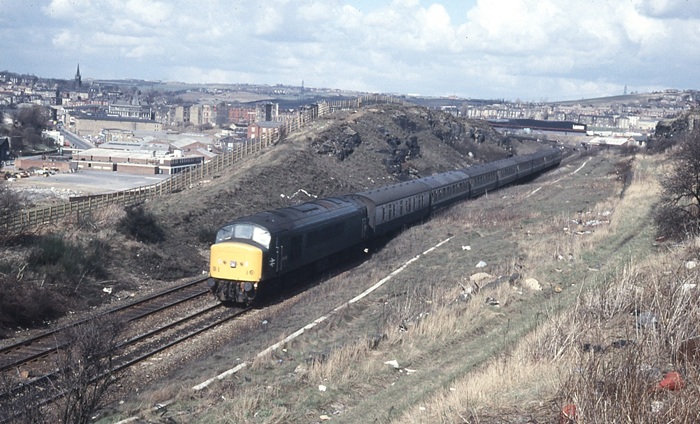
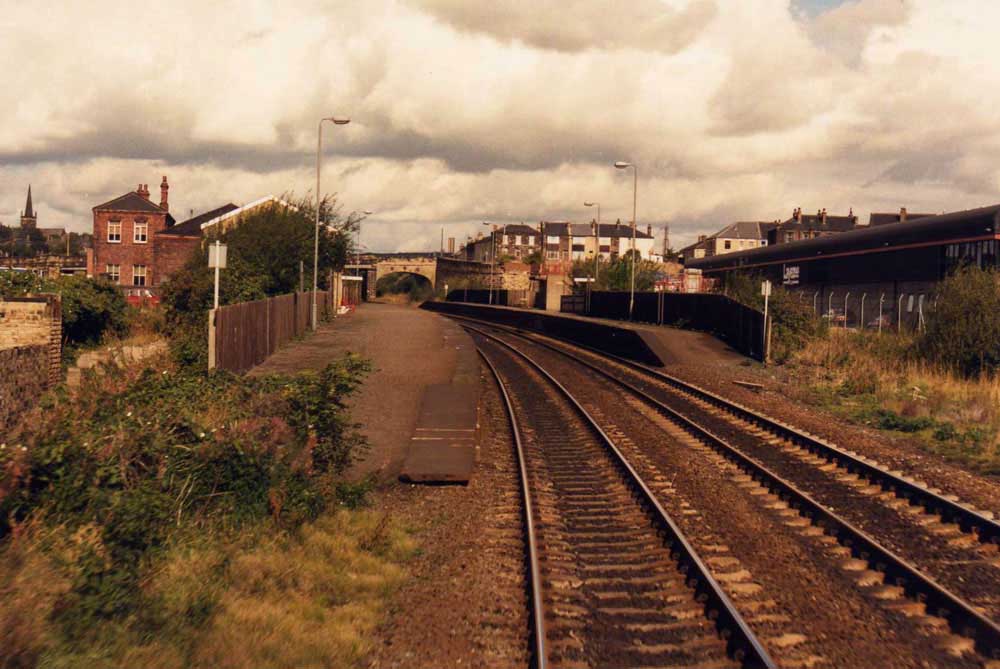
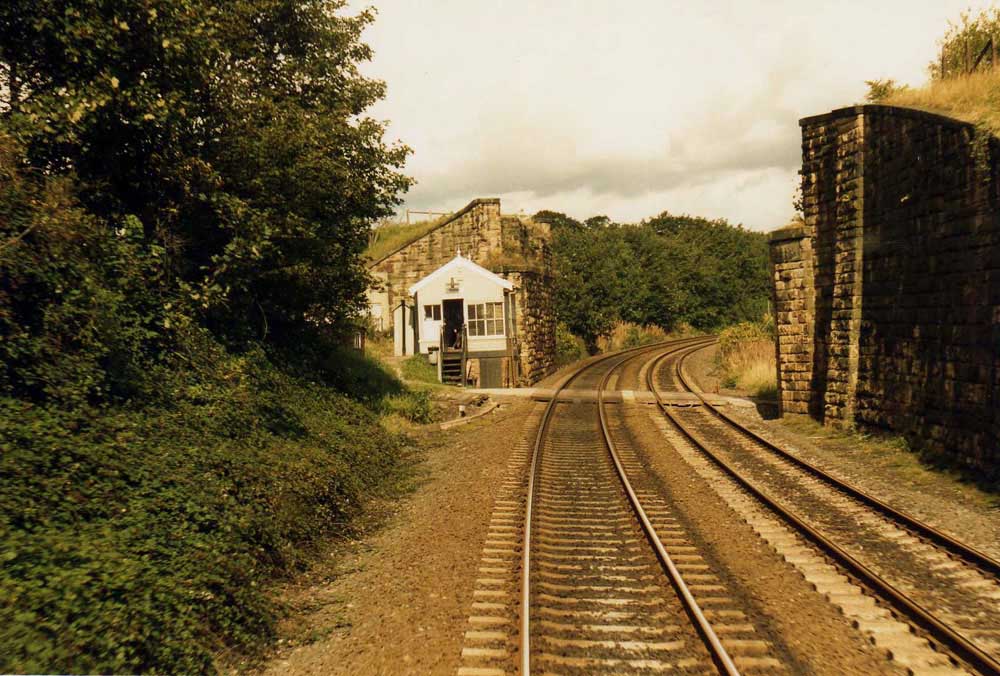
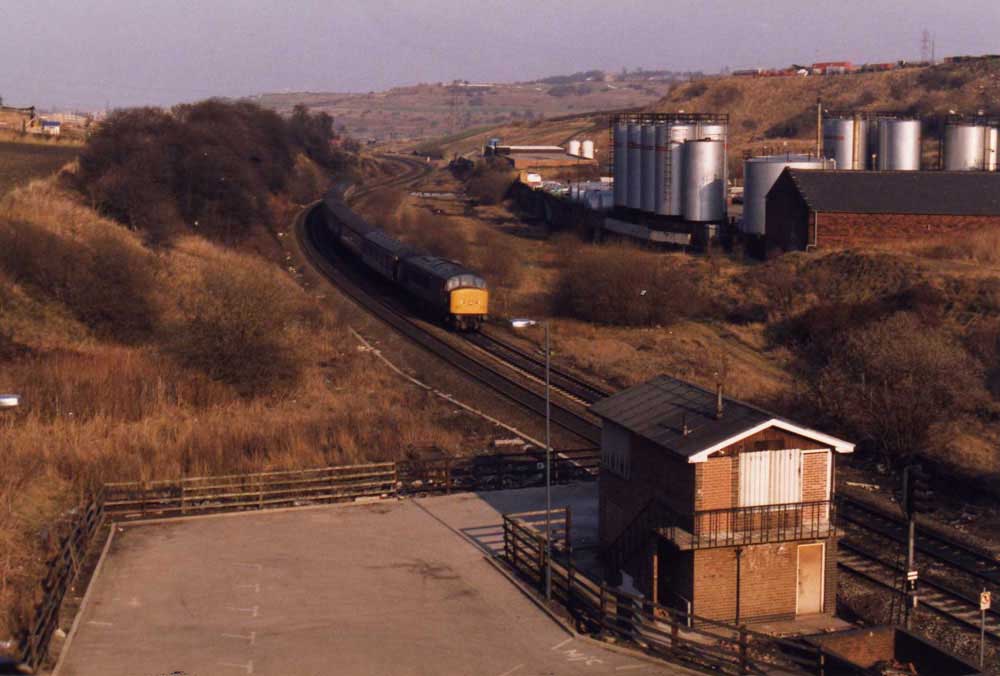
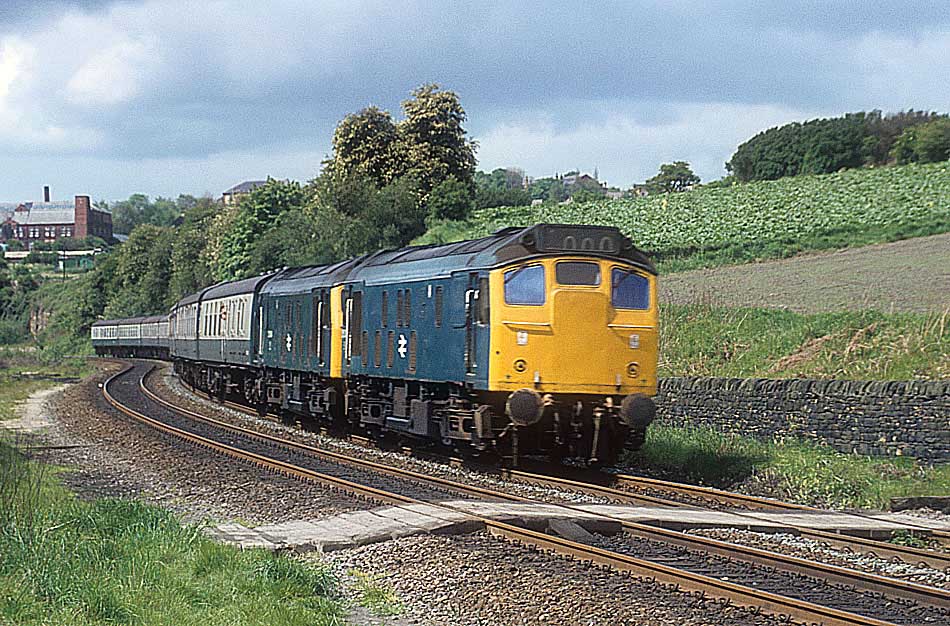
Once clear of Morley Tunnel it was a short ride down to the city of Leeds with its onetime multitude of routes, which are now but a shadow of former times.
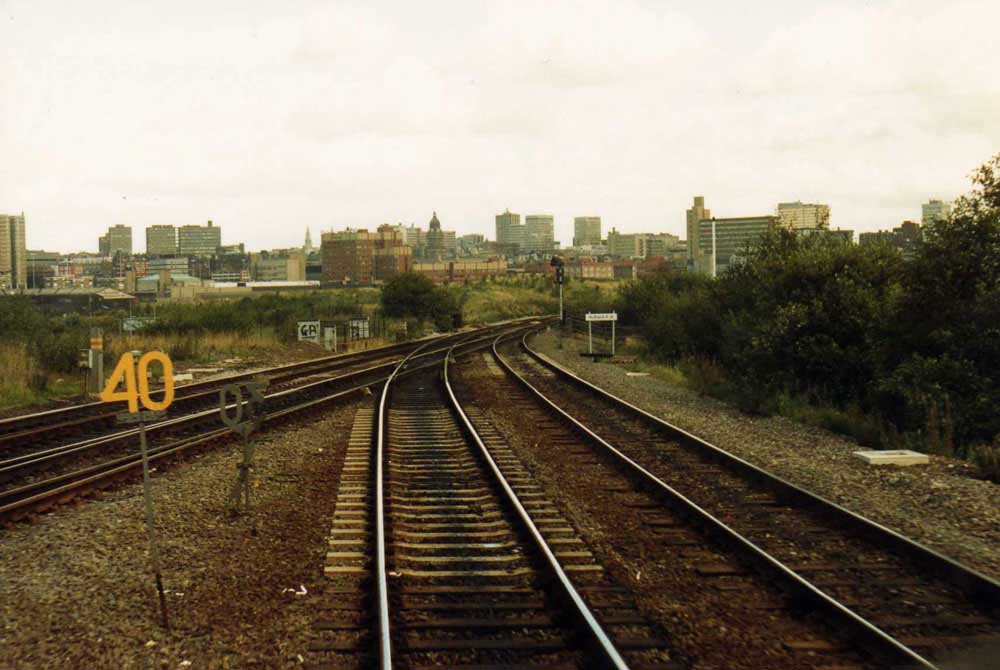
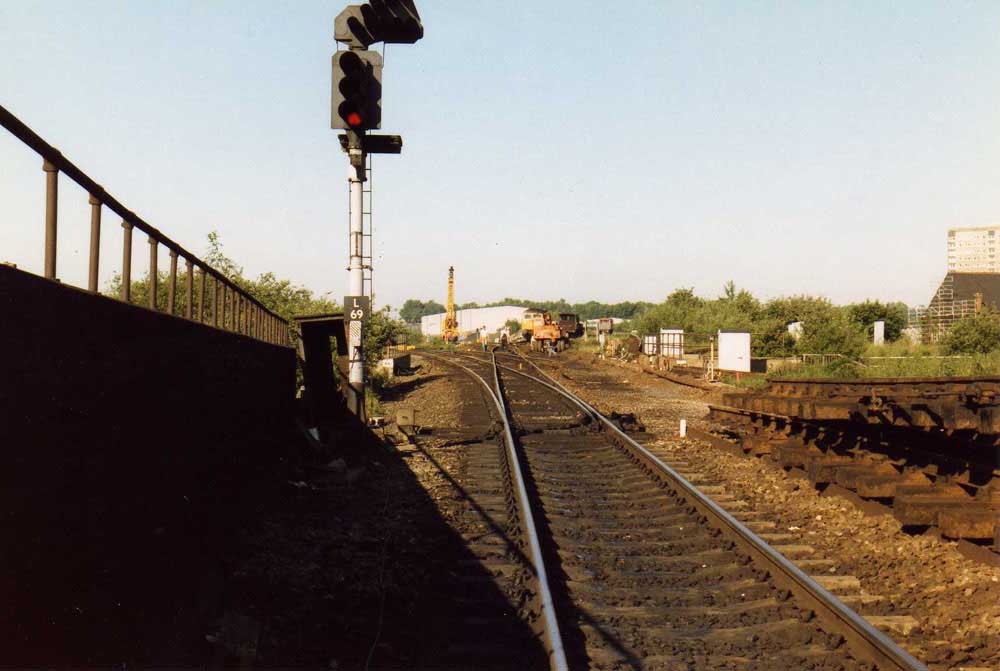
Michael knew the familiar Class 08 shunters as 'pilots' or '350's' (because of their horsepower), and well remembers their ability to 'tilt' back and forth when running at any speed. One morning at Holbeck we had to take three of our 350's to Bradford Hammerton Street and 'swap' them over for three of their 350's. Officially they only only did 15 m.p.h., but with care you could get another 5 m.p.h. out of them. On this particular morning we were heading back to Holbeck with the 350's, my mate was making a point to finish, we had about 5 hours in, but on the approach to Holbeck West junction (where the Huddersfield and Doncaster Lines join), there was such a bang, with me holding on tight whilst my mate hit the brakes. It seemed like an eternity before we stopped, on inspection it was found that a coupling rod was bent! My mate had let them run a little bit too fast on the downhill grade. So we got onto the phone with the signalman which resulted in us stopping the railway to Bradford until Holbeck could send a light locomotive with fitters to reach us. The fitters 'uncoupled' the rod and coupled the locomotive, a Class 31, to the three Class 08's and towed us back to Holbeck, which was now taking up much of the morning and created a lot of hassle for the commuters who were just trying to go to work. Instead of us finishing our shift in 5 hours, we made 12 hours......lesson, never ever rush things!
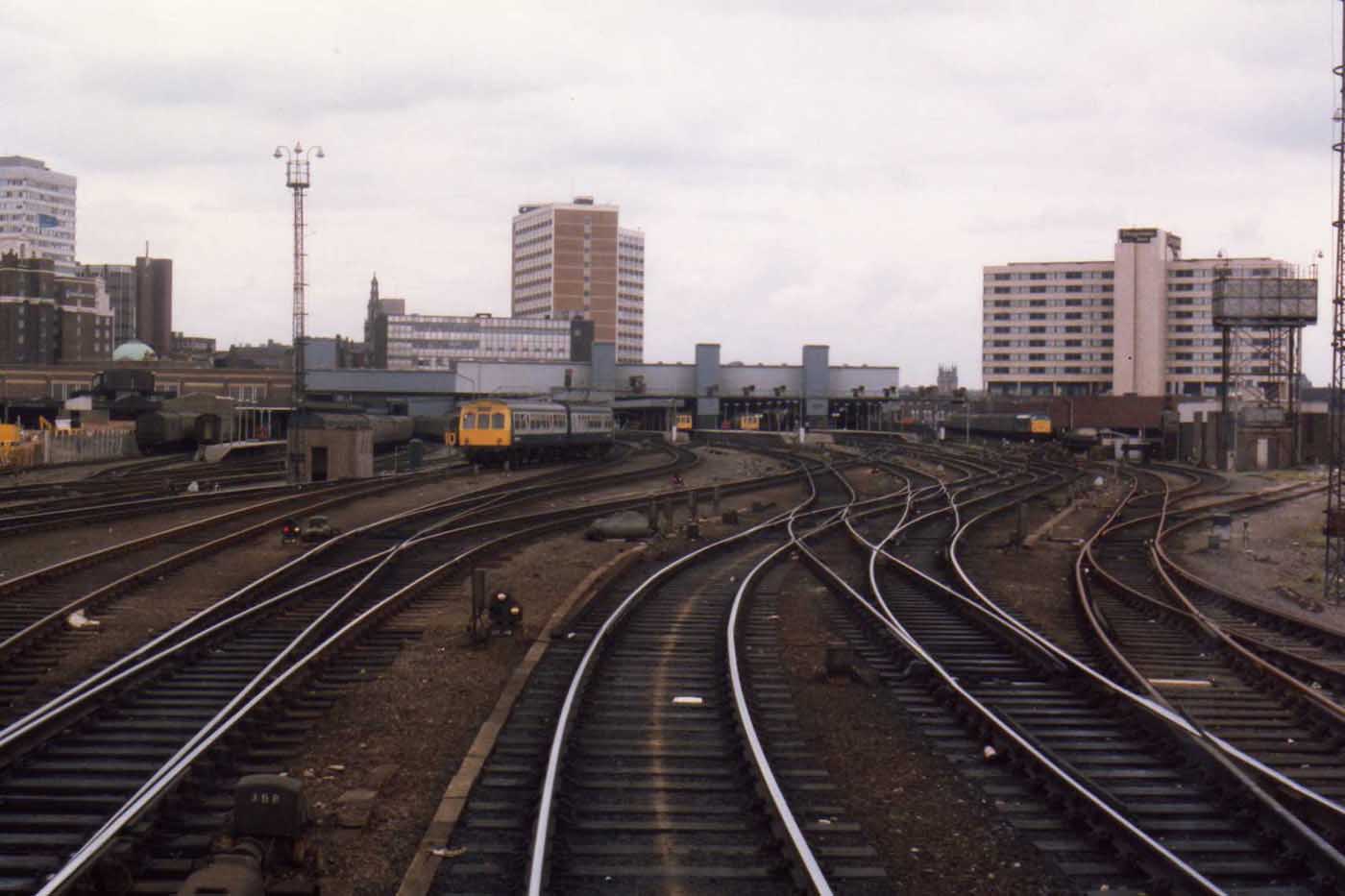
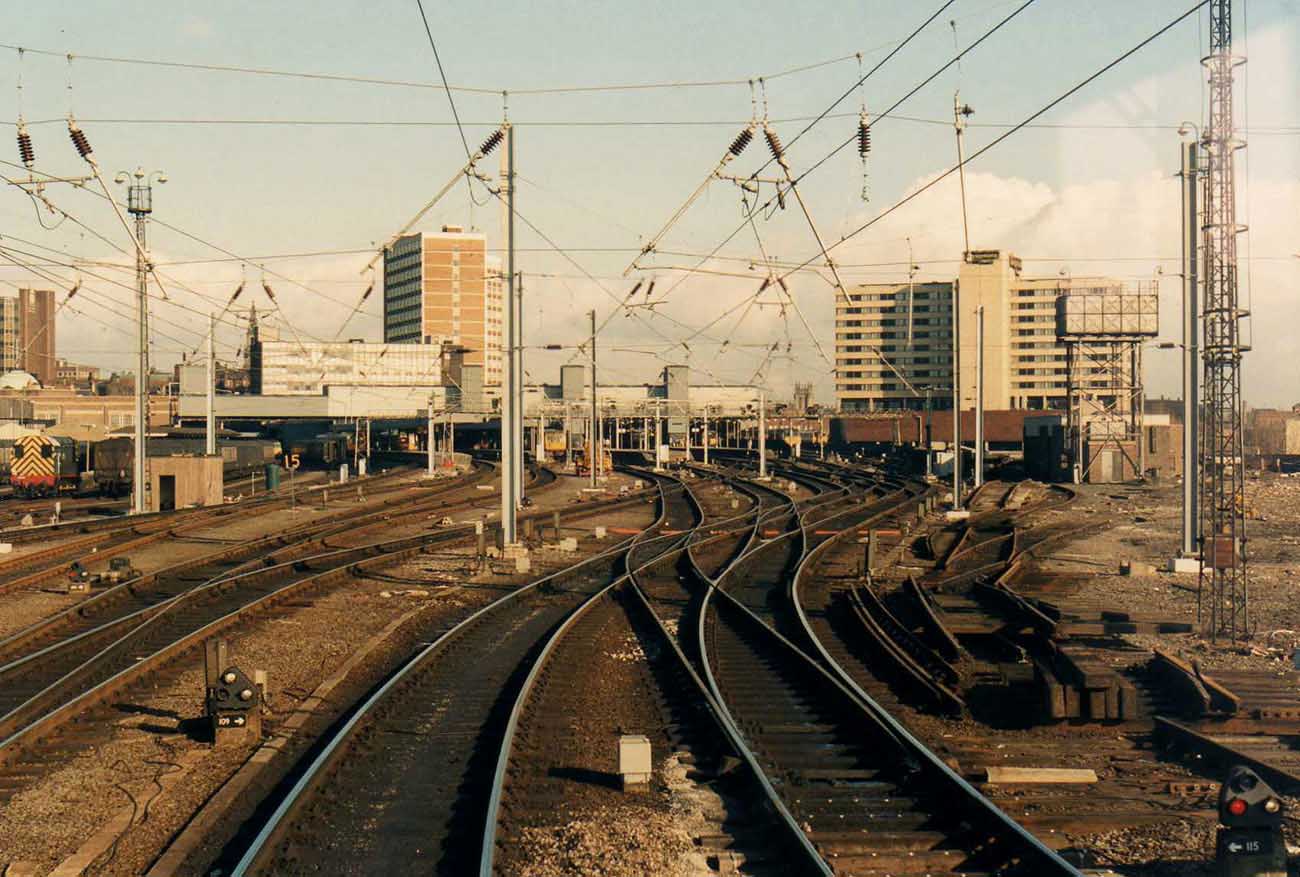

Changes
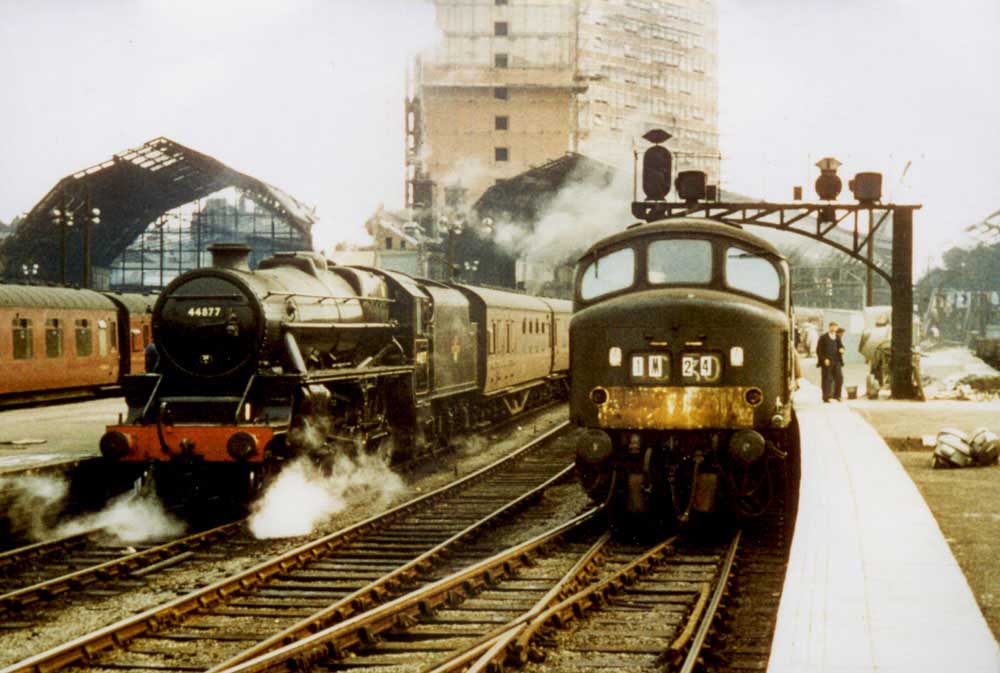
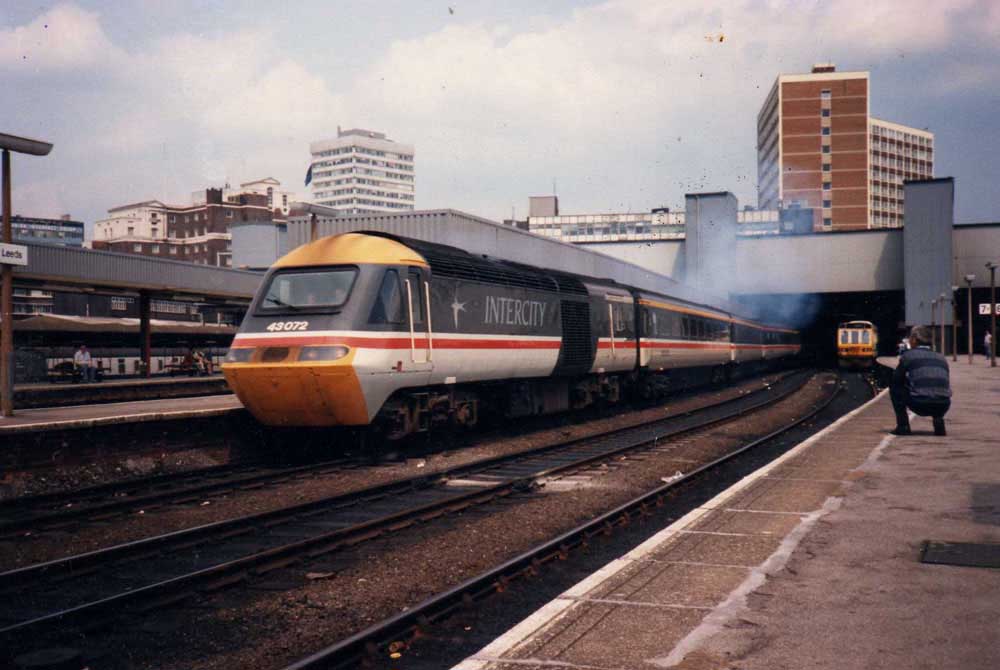
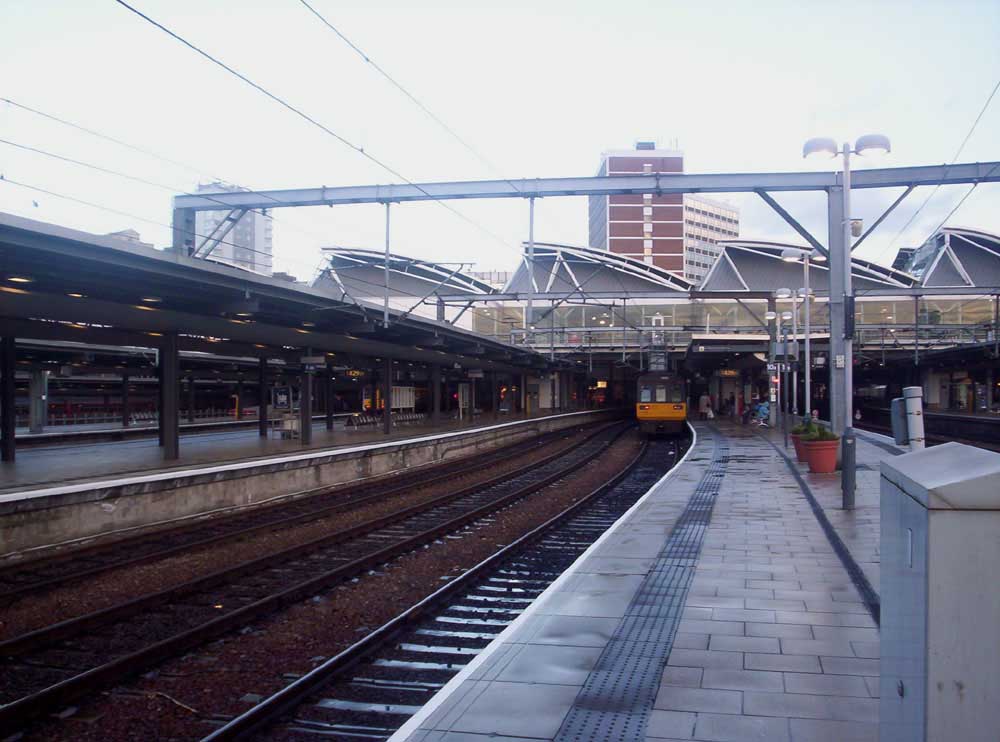
Three views of the west end of Leeds station, taken in 1963, 1987 and 2006, all from about the same location.
The first view depicts D133 on May 27, 1963. The paper sticker headcode indicates this is a service to St Pancras. Research indicates the 1M24 headcode applies to a Sunday Leeds - St Pancras service. The stock had arrived as the 11.15 ex Bradford Forster Square, in this case D133 has come up from Holbeck to take the service on to London, departing 11.48. Note the locomotive still carries the old style tail lamp, suggesting the Peak has only just arrived from Holbeck. The second view showing the HST is from June 1987 and the third view is from December 6th 2006 showing the changes made because of the electrification.
The platforms occupied in the first view by the Black Five and the Peak were bays with a center road to allow release of incoming locomotives. The left platform was originally No.3, then renumbered in 1952 to No.9, then to No.5 in 1963, at that time it was made into a through platform. In 2000 this platform was renumbered to No.8!
The platform occupied by D133 follows a similar renumbering to that occupied by the Black Five, it was originally No.4, then No.10 (1952), then No.7 (1963), then back to No.10 in 2000!
To recap the Holbeck drivers could use three routes to traverse the Pennines:
1/Leeds via Huddersfield, Manchester Victoria, over the Moss to St Helens and forward to Liverpool Lime Street.
2/Leeds via Bradford Interchange, Todmorden, Manchester Victoria, St Helens and Liverpool Lime Street.
3/Leeds via Huddersfield then Manchester Piccadilly and via Warrington to Liverpool Lime Street.
On occasion visits would be made to Edge Hill & Allerton.

Page added July 29th 2006.
Last updated April 11th 2025.